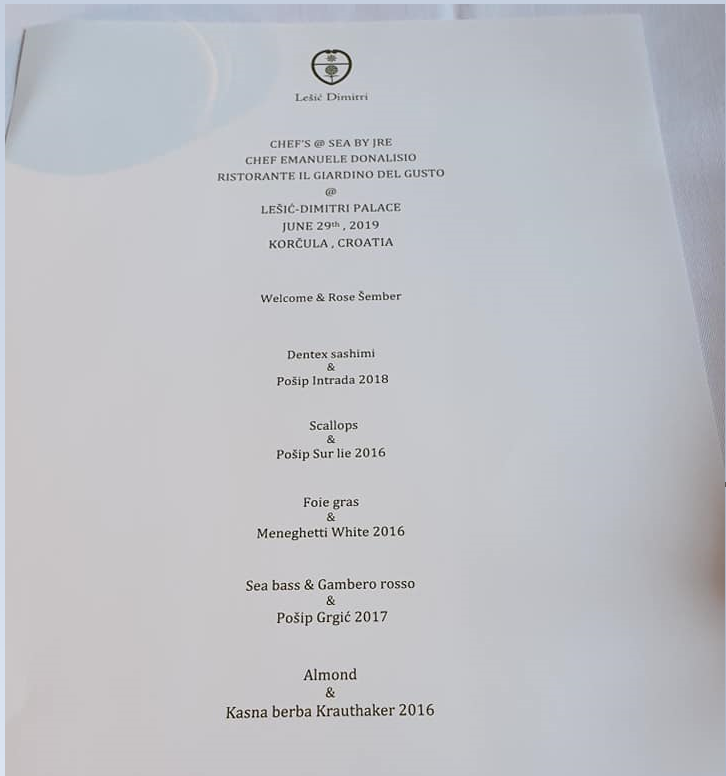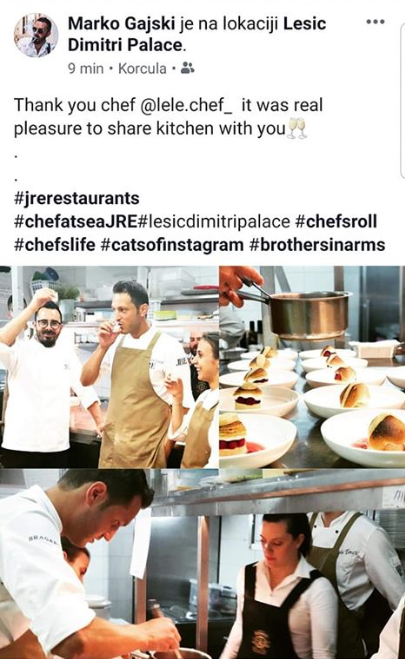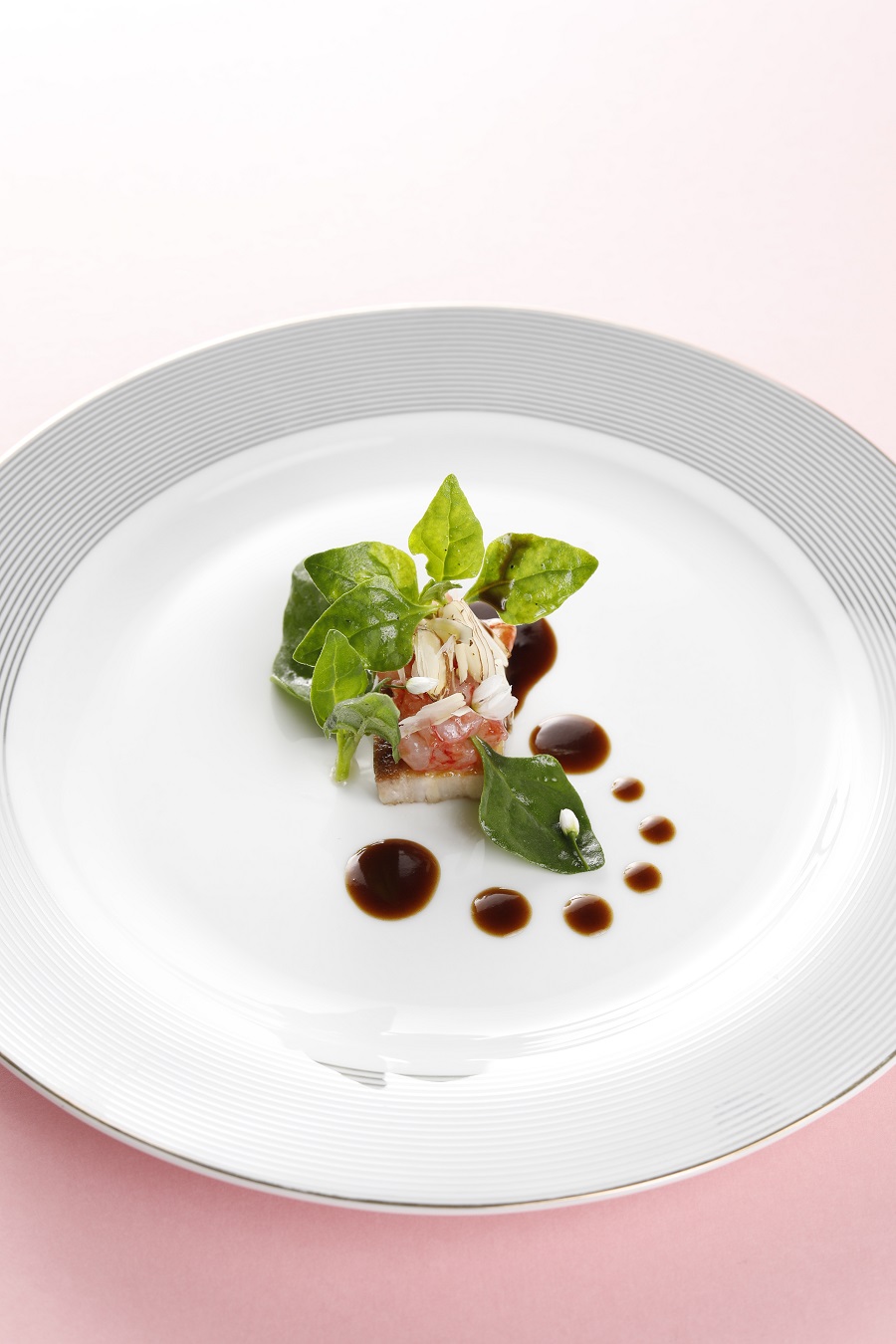Is Korcula Really a 'Mini Dubrovnik'? Please, May It Never Be
July 4, 2019 - Two idyllic and historic stone towns on the Adriatic, but is Korcula really a 'mini Dubrovnik'?
The Dalmatian coast in the summer is a fascinating - and spectacular - place to be. Endless sunshine, divine beaches, the inviting water and plenty of historic towns to savour. From mass tourism to something a little more private, there is plenty of choice depending on your tastes and budget.
I have spent the last couple of weeks travelling extensively along the coast - Kornati islands, Zadar, Split, Hvar, Korcula and Dubrovnik, and it has been an interesting exercise observing the various destinations close up. And the differences are stark, as are the approaches to tourism. One of the most thought-provoking for me at least was a night in Korcula, sometimes known as a 'mini Dubrovnik' followed by a night in the Pearl of the Adriatic itself.
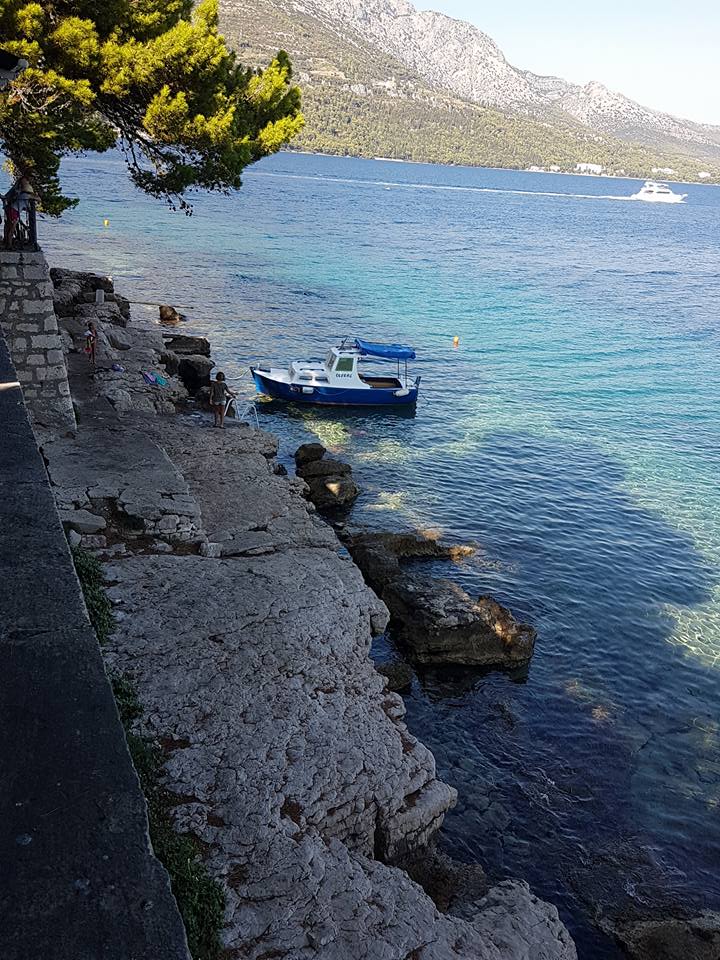
Korcula Town is a relatively late discovery for me, which is all the more strange as I lived on the neighbouring island for 13 years. You can read about the first visit two years ago here. Every time I return, something impresses me more, and I was intrigued on this last visit to be able to compare it to Dubrovnik where I would be spending the following day.
On paper, and visually, the 'mini Dubrovnik' name has some merit. Both are imperious walled towns jutting out into the Adriatic. Both have rich traditions and centuries of fascinating history. Both were the first in the world to abolish slavery - interestingly, Korcula some 200 years before Dubrovnik, way back in 1214.
But there, at least for me, that is where the comparisons end, especially when one looks at the approach to tourism.
A lot has been written about overtourism in recent weeks, the latest a piece in The Daily Telegraph by Jane Foster, who revisited Dubrovnik after a year to see what had changed for the better. Not a lot.
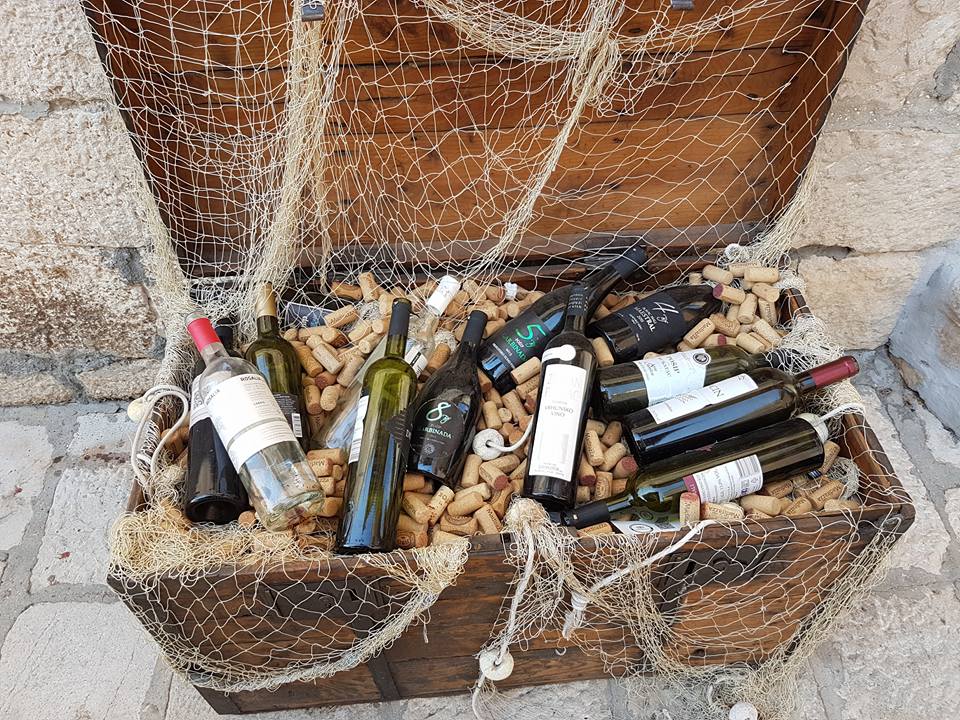
One of the strongest first impressions of my first visit to Korcula Town was how well the destination did in telling its visitors what its strengths were. Within seconds of entering the old town, you knew that this was an island of wine. And olive oil. And art. And culture. Whereas many Dalmatian seaside towns have opted to import cheap souvenirs from China, Korcula always strikes me as somewhere different in that respect, especially in the old town.
For this is an artisan town, with fabulous small shops celebrating local ingenuity and production, rather than cheap plastic souvenirs from the other side of the world.
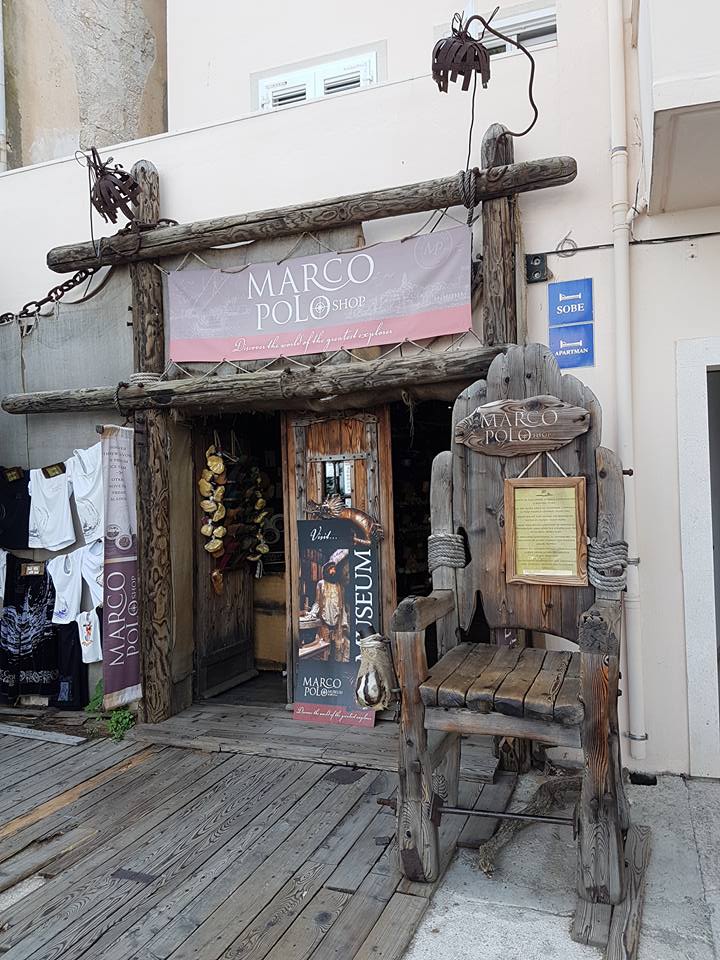
And while Kings Landing has Game of Thrones, Korcula is the birthplace of Marco Polo, a tourist image to cash in on, but one which Korcula does well - without cheapening the look and feel of the destination - want to get your Marco Polo souvenir? There is a dedicated shop for that, and the rest of the shops are given over to art and jewelry.
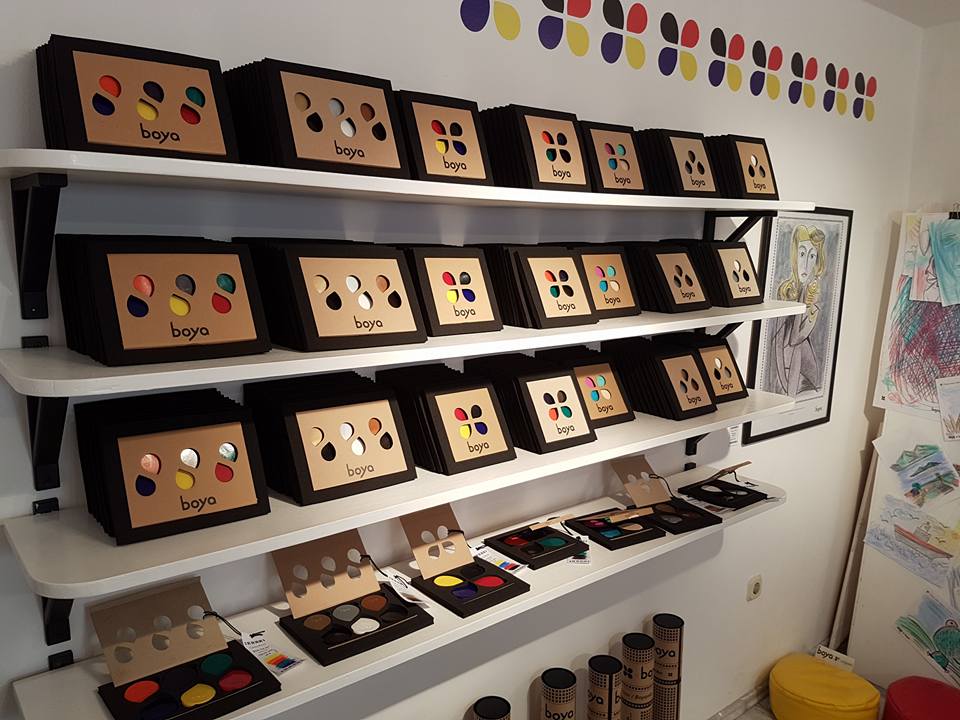
My favourite time to visit Dubrovnik is in the first week of February, for the celebration of the local patron saint, St. Blaise. Out of season, with most restaurants closed, their chairs, tables and awnings stored for the winter, the town is stripped back to its bare stone and is almost devoid of tourists. But the town is full, for this is a very popular local celebration.

Local traditions, local celebrations, family gatherings - it really is a privilege to be a foreign fly on the wall. You can learn more about magical Dubrovnik as its annual cultural height from my visit to the Festival of St Blaise a couple of years ago.
But that magical Dubrovnik is only a fleeting moment these days. Cruise ships, day trip buses, and more, more, more tourists has become the daily routine in the summer. So much so, in fact, that some local businesses are reporting worse revenue in July and August as the majority of visitors are low or non-spenders, and Dubrovnik's traditional wealthier clients stay away due to the crowds. Everyone loses except those in charge of the Tourism Numbers Bureau.
The obsession to pack more guests in and the desire to make as much money as possible manifests itself in various ways. Two of the things I love most about Korcula is the abundant breeze, so much so that I dedicated an entire article to it last summer.
And the second thing is Restaurant Row. One half of the old town's coastal path is given over entirely to restaurants. Aided by the wonderful breeze, an array of quality restaurants split their outside space between a few tables by the outer city wall and more tables by the restaurant itself. In between is a public walkway where tourists are free to roam. Day or night, it is an enchanting walk, and the balance between the historic buildings and the needs of tourism is just right. The photo below was taken close to midnight when most guests had gone, but you get a sense of the space.
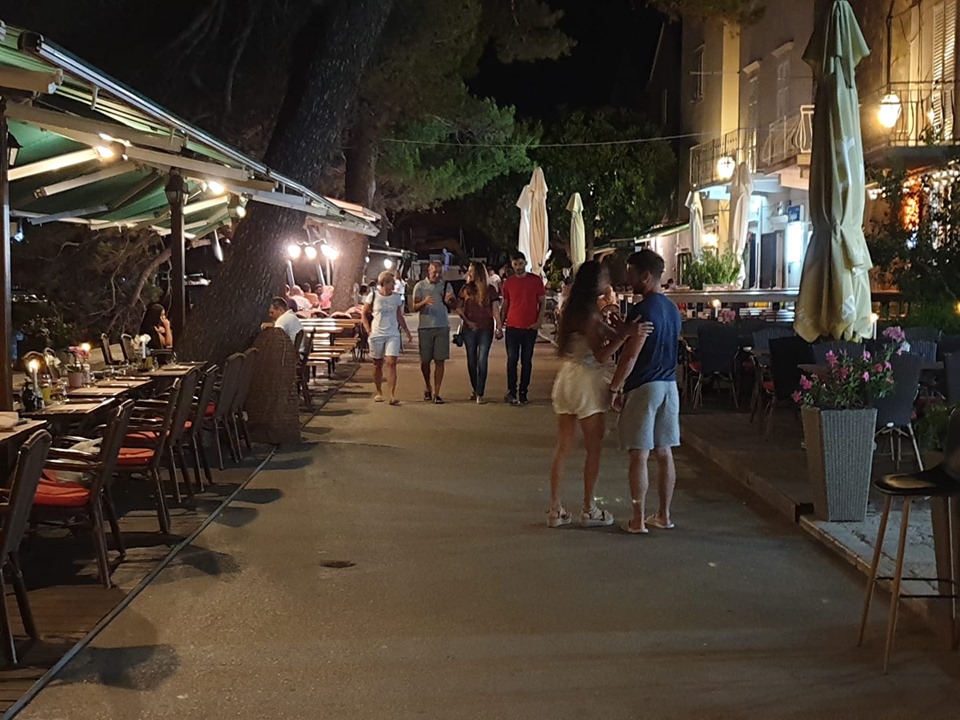
Meanwhile in Dubrovnik...
The magic of Dubrovnik, with everything stripped back to its stone origins, is glorious. Come back in July, however...
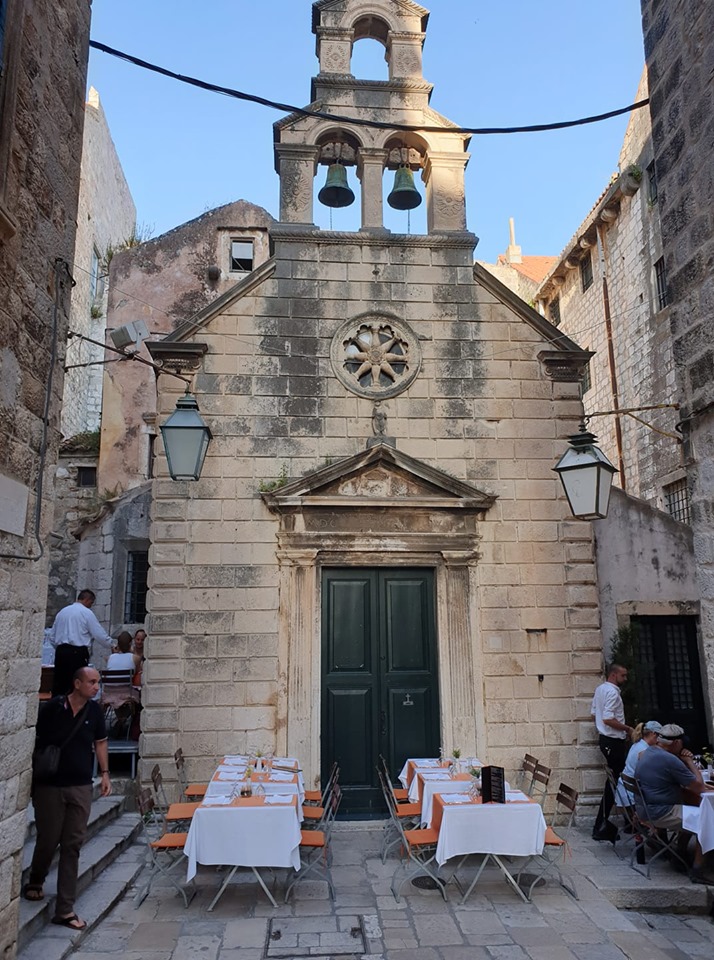
I posted this photo above on my personal Facebook page a few days ago with the caption 'Tourism meets the Catholic church,' and it provoked quite a reaction. Next to the Church of St. Nikola, which is only used about twice a year, an (apparently) very good restaurant with small inside space has come to an agreement with the Catholic Church, and they rent the space around the church to put tables there.
Some comments spoke of the quality of the restaurant and the fact that the church is never open. Others pointed out that churches were never built for the purpose of having restaurant tables around them when they were closed.
To me, the photo is a symbol of the difference between Dubrovnik and the so-called 'mini Dubrovnik.' Maximise the space for profit, get what you can. Never mind that somebody might have some to the city to revel in its incredible architecture. As a sightseeing tourist, walking along a street and seeing a church surrounded by restaurant tables tells its own story in how a destination values its treasures and chooses to promote them.
If you take the human factor out of Dubrovnik and Korcula, the case that Korcula is a mini Dubrovnik is strong. Add in the human factor, especially the obsession with packing as many people into the Pearl of the Adriatic, and there the comparisons end.
Korcula is one of the true jewels of Croatian tourism, moving along a path of quality tourism and doing everything well. Is Korcula a mini Dubrovnik? No, not at all.
But imagine what a destination Dubrovnik could be if it learned and implemented some lessons from its island neighbour. Mega Korcula could really make Dubrovnik shine.
To learn more about Dubrovnik, check out the Total Croatia Dubrovnik in a Page guide.
To learn more about Korcula, check out the Total Croatia Korcula in a Page guide.
And where else in the world can you have an early morning start to match this, above.
Emanuele Donalisio Excels at JRE Chefs on Sea at Lesic Dimitri, Korcula
July 2, 2019 - Partnering with resident Lesic Dimitri chef Marko Gajski, Emanuele Donalisio put on a night to remember on Saturday's JRE Chefs on Sea dinner on Korcula.
Before we talk about the food, I have to tell you about the wind.
For it is it one of the great unmarketed gems of life in Korcula Town during the hottest months. As others swelter, guests in Korcula relax with a glass of wine as the constant gentle breeze keeps temperatures at an altogether more acceptable level.
Since first discovering it a couple of years ago, the terrace at Lesic Dimitri Palace has quickly become one of my favourite spots in the country, as well of one of the shining examples of how to do gourmet and luxury tourism par excellence. Arguably the top boutique hotel in the country, Lesic Dimitri Palace takes food very seriously and can be credited with raising the culinary bar in Korcula Town considerably, as other restaurants have followed. The hotel is already in the Michelin Guide and its young head chef, Marko Gajski, is a rising star on the Croatian gourmet scene. Lesic Dimitri is also a member of JRE (Jeunes Restaurateurs d'Europe), an excellent association of restaurants whose head chefs are younger than 42. The association is very active, bringing together chefs from all over Europe, who learn from each other.
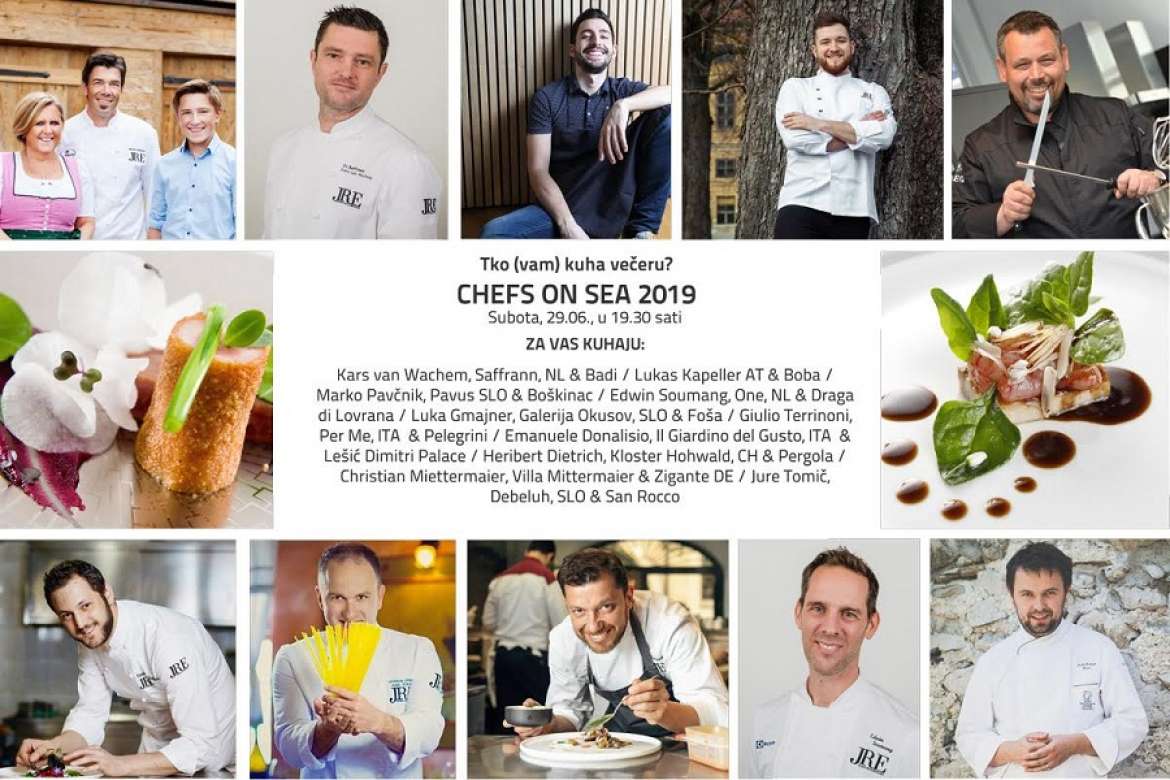
Initiatives such as these are great for Croatia's young chefs - an opportunity to work with and exchange ideas with their European peers. Last year, the first Chefs on Sea event was held in Croatia, where 6 quality Croatian restaurants and their JRE chefs welcomed an international JRE chef to prepare a culinary feast to remember. This year, the number of restaurants expanded to ten, all of them cooking at the same time last Saturday evening.
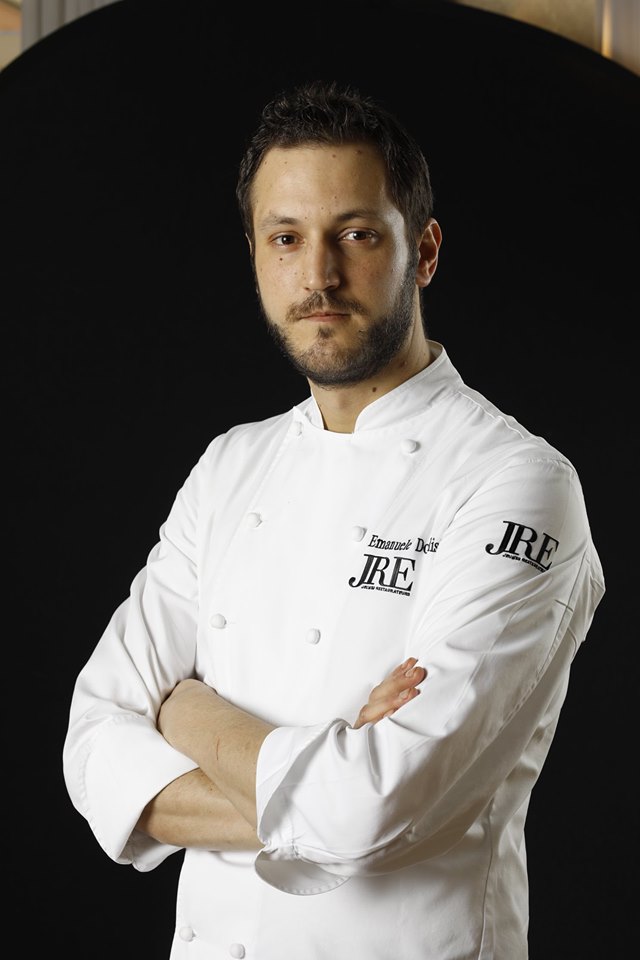
An invitation by JRE had me heading to Korcula and dreaming of that beloved breezy terrace. Chef Marko Gajski was joined in the kitchen by another JRE chef from Italy, Emauele Donalisio. Donalisio comes from Ventemiglia, the region where Liguria and Piedmont meet France, in a complex and well-intertwined zone of culinary experiences united by a word “Riviera”. It is interesting to note that Emanuele restaurant Il Giardino del Gusto was part of the travel feature published in New York Times in September 2017, selected as an example of the gastronomy tradition and elements that form the heritage of this Italian region.
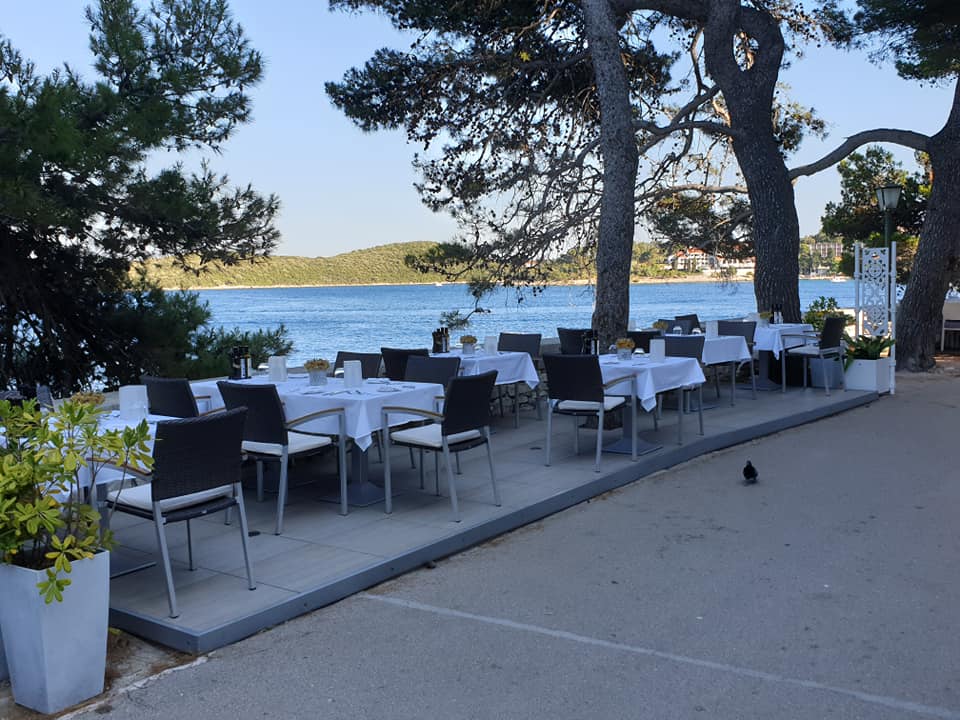
The stage was set. The terrace awaited.
A wonderful evening was had by all, as Donalisio's creations were extremely well-received and washed down by specially paired Korculan and other Croatian wines.
Rather than try and describe each myself, I took the opportunity to spend a little more time on that lovely terrace with our Italian visitor the following morning, and he kindly described each dish in much more detail than I could muster, so the information about each dish are his words, not mine.
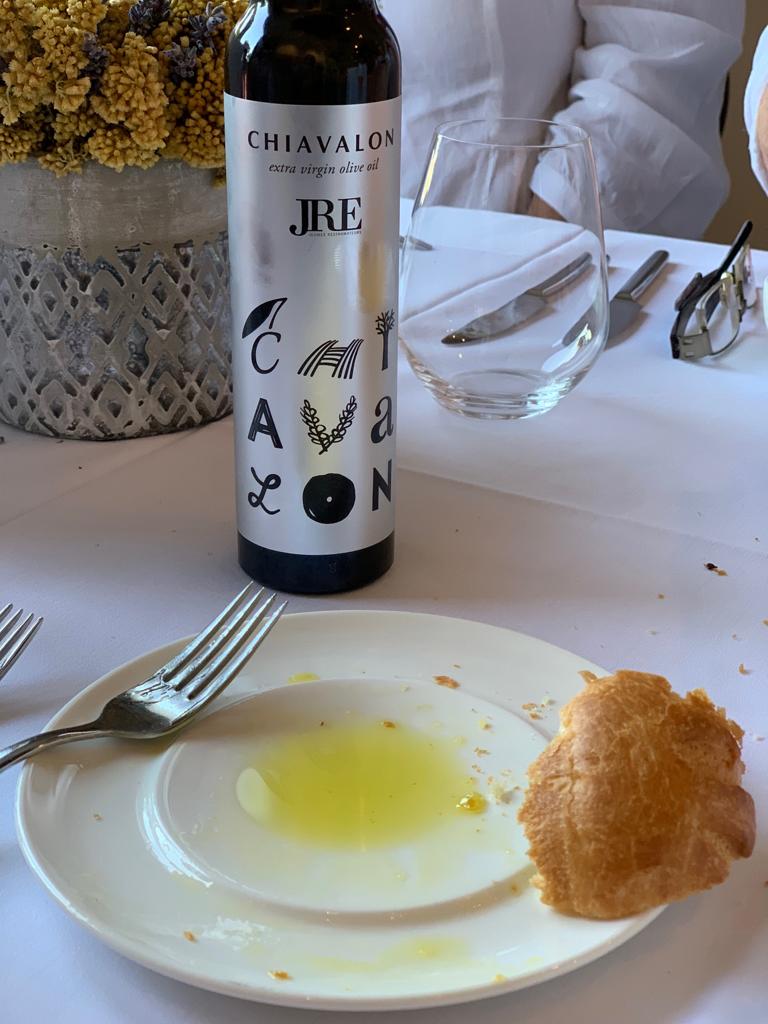
A quick note on the olive oil before I hand over to Emanuele. Extra virgin olive oil from Chiavalon, the Istrian brothers who are taking the olive oil world by storm, and are regularly featured among the best olive oils in the world. This was going to be quite a culinary delight.
Tuna
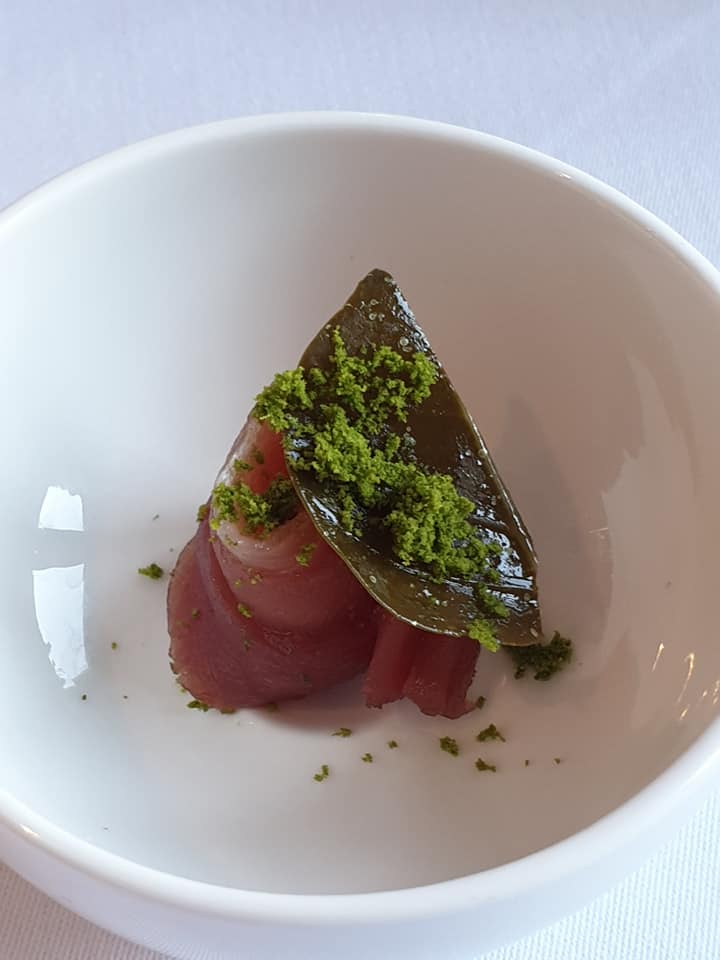
The tuna canape starter with caper leaf and dried pesto powder.
Dentex sashimi
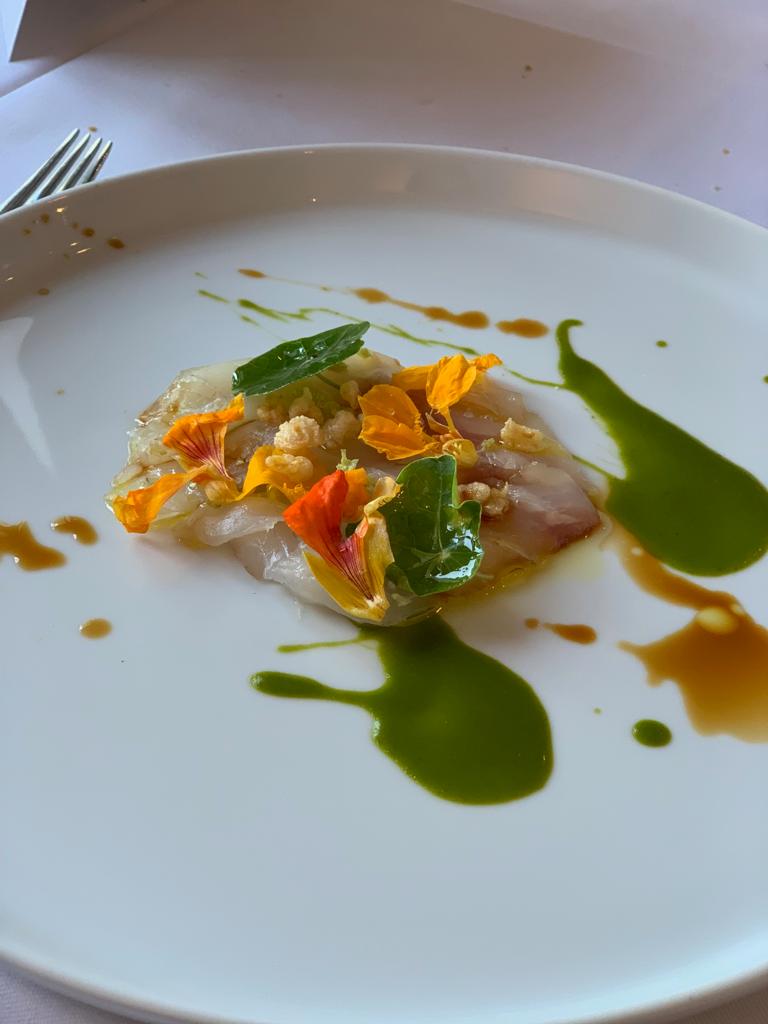
Dentex sashimi made with flower, which grows locally near us by the sea. We use the leaf from the flower and the seeds. The seeds are very similar to wasabi, for example, and the leaves are very spicy. The flower has a beautiful colour, and so we make this sashimi with a sauce from the leaves and Trebbiano wine. Add a little bit of soya sauce, some extra virgin olive oil, and salt and pepper.
Scallops
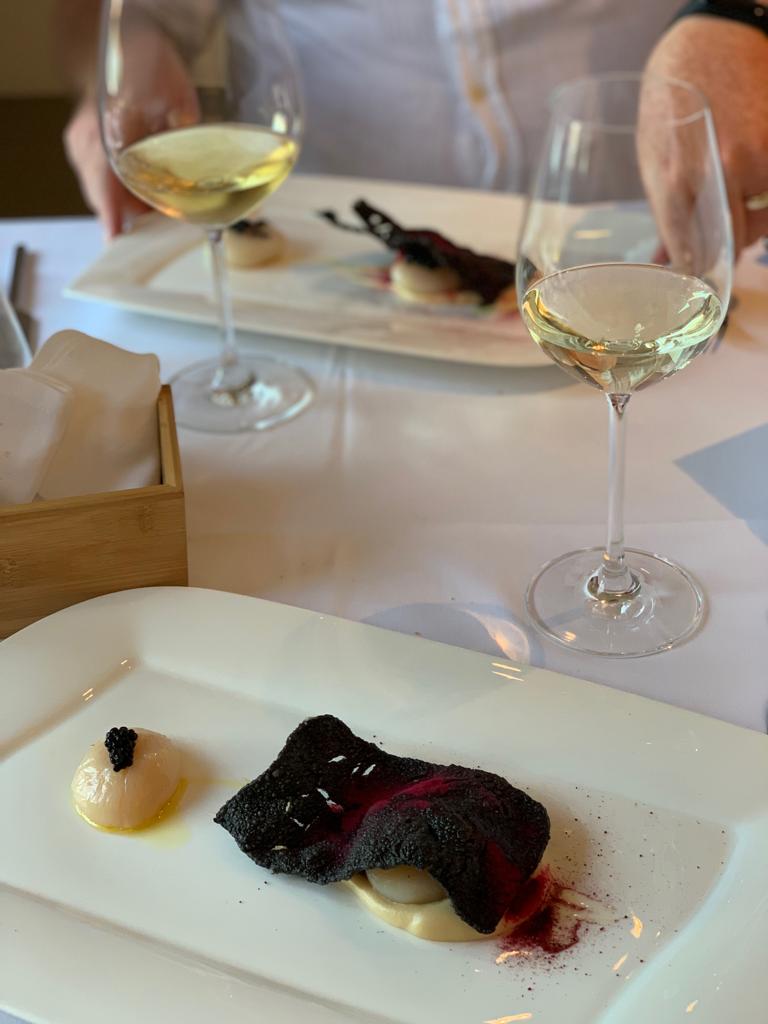
The scallops are smoked with pine in the oven. In my restaurant I do it on wood. As a sauce we use cauliflower with sugar from the Philippine, which is a good match. And then we make a crispy cloud with rice with black ink. So this is the crusty part, and we also top it with beetroot powder.
Foie gras
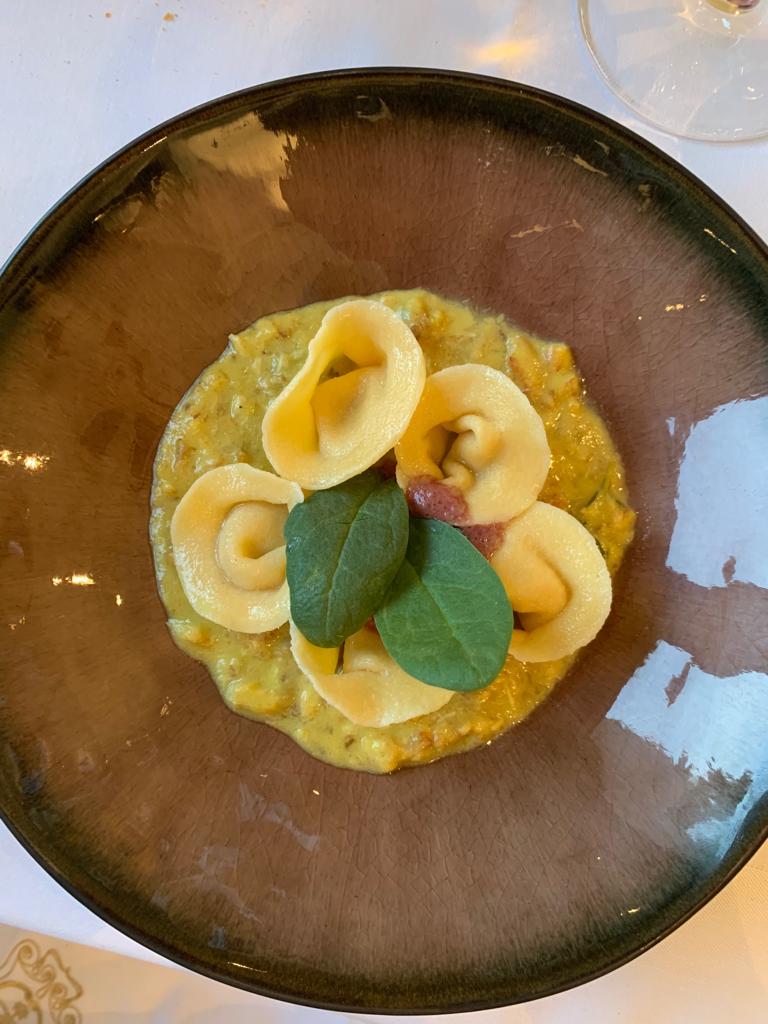
The third dish was pasta, tortelli which is made from home-made dough. The tortelli is stuffed with foie gras, put in the oven at 100C for 20 minutes, and add salt, pepper and brandy. Then when it is cooked, we blend everything. We add a little bit of cream. The result is an explosion of taste with the fois gras. We also make a fish ragout with yellow cherry tomatoes. As we do in Italy, we put the cherry tomatoes on a very hot pan, add garlic cloves and sea salt. We cook it slowly on the side and after that blend everything, adding the ragout. We also have some olive foam which is good with foie gras, as well as some spinach leaves.
Sea bass and gambero rosso
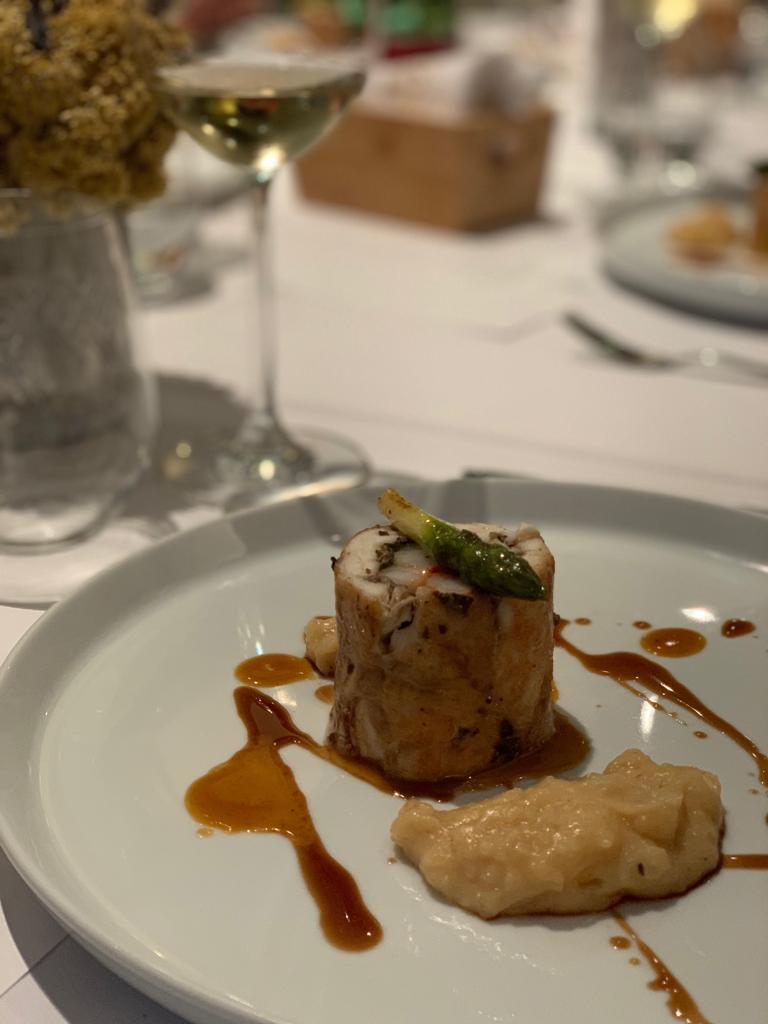
The main course was sea bass with red shrimps from Sicily, and mushrooms. A fish version of Beef Wellington! It is all held together with a pork net. We take the fillet of the fish and, just like with meat, make it flat and then season everything with mushrooms which we sautee. The important thing about the shrimps is that they need to be nearly raw, because if they are cooked more, it will affect the texture of the dish. We cover it with foil and keep it warm. The sauce is a demi glace. I like to use mashed potatoes with tamarind, which adds a little acidity.
Almond
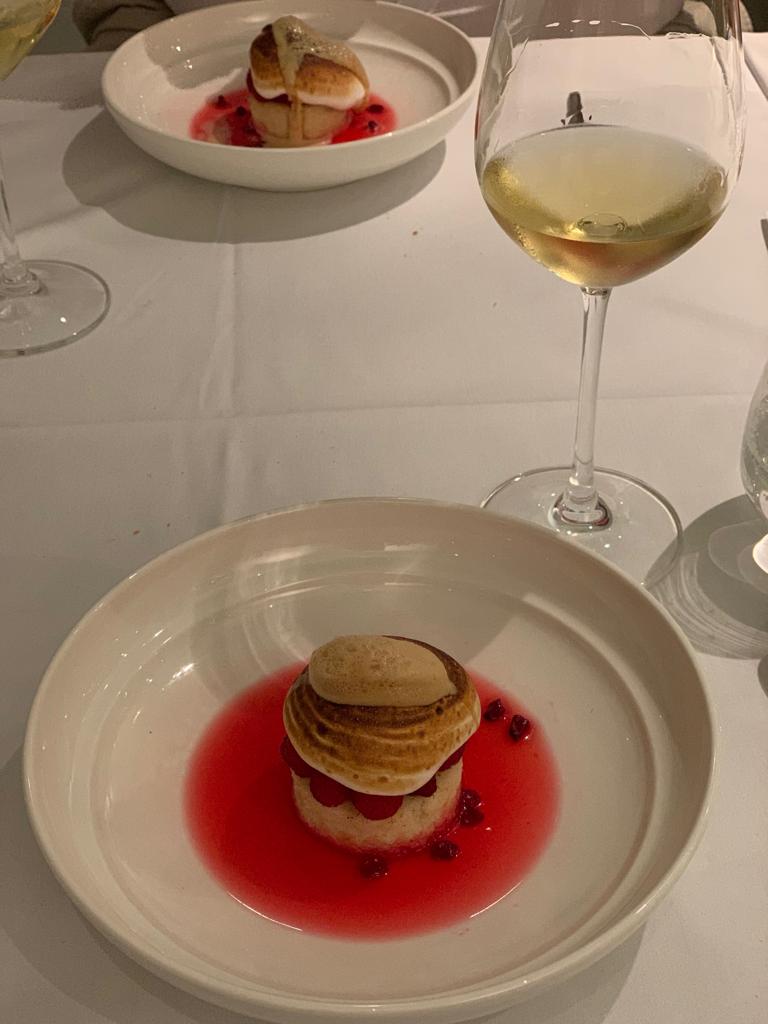
Dessert was from one of my classic recipes, based on almonds. We use strawberries to give some acidity, then we make some soft meringue, which we burn a little. We put some foam of coffee on top. And at the bottom we have Maraschino. The most important thing is that the taste must remember the almonds.
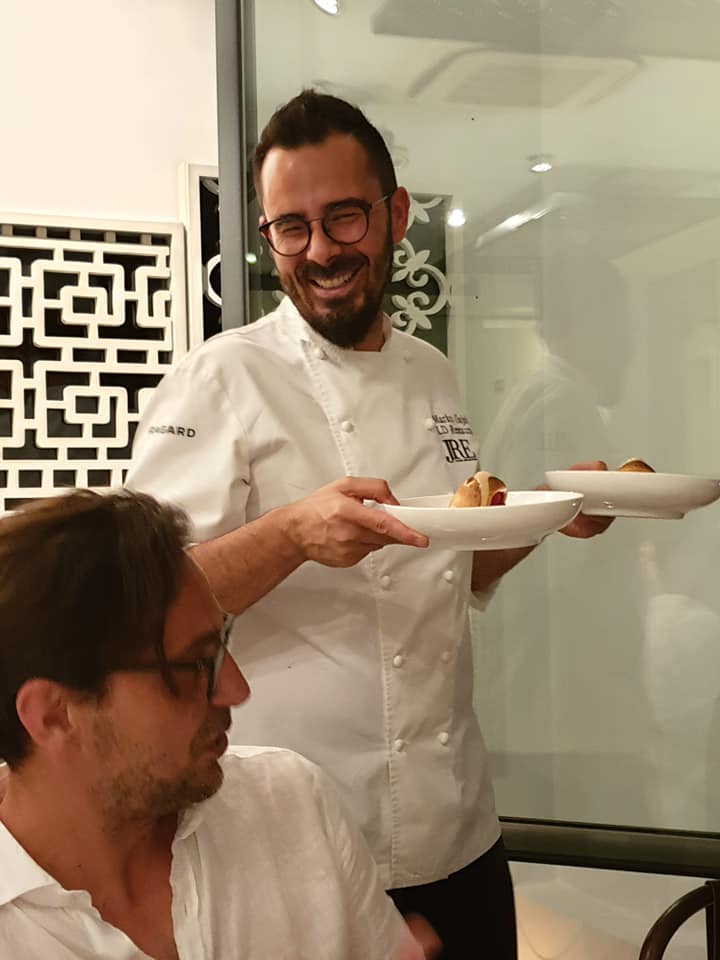
Marko Galjski was clearly enjoying the stimulating company in the kitchen and brought much cheer with his regular appearances at the table.
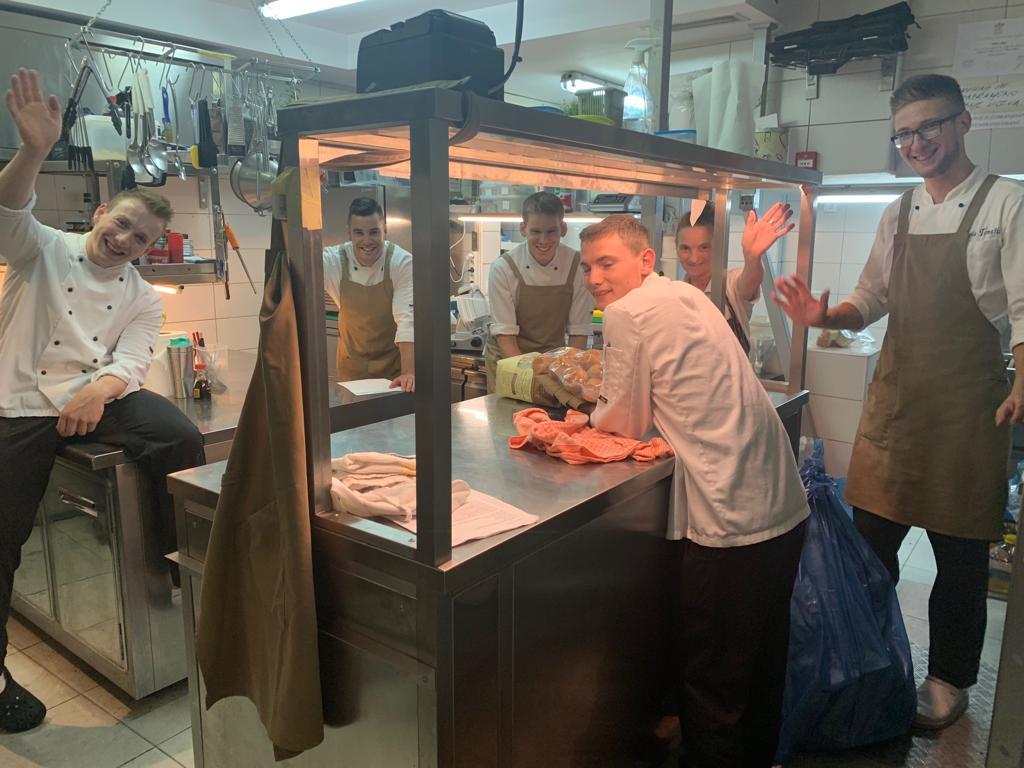
And the kitchen team looked happy and relaxed at another spectacular dinner for almost 50 guests delivered to perfection.
A few thoughts from Gajski on the evening.
In an age of overtourism and chasing the money, it is refreshing to find beacons of excellence where the quality of the product and the satisfaction of the guest is the most important thing. The food apart, the rooms are just stunning. Just nine rooms in total, each are themed around important locations on the Silk Road made famous by Korculan explorer, Marco Polo. The rooms are themed to Venice, China, India, Ceylon and Arabia - above a tour of China from my visit during the Korculanske Pjatance Spring Food and Wine Festival.
And what better way to start the day after such an amazing evening that a morning stroll through the empty early-hour streets of this absolute Dalmatian gem. Take a 6am walking tour above.
To learn more about Lesic Dimitri Palace, visit the official website.
To learn more about JRE in Croatia, click here.
You can learn more about Emanuele Donalisio on the JRE page dedicated to him and his restaurant.
To find out more about the island of Korcula, check out the Total Croatia Korcula in a Page guide.
Chefs on Sea 2019: 10 Croatian JRE Restaurants Not to Miss on Saturday
A culinary extravaganza on June 27, 2019, as the JRE Chefs on Sea initiative returns to Croatia for the second year, bringing together talented Croatian and international chefs in some of Croatia's top restaurants.
It is seven years since the late, great Anthony Bourdain discovered Croatia and its cuisine. He was blown away by what he called the 'world-class food, world-class wine, world-class food.' I remember watching his No Reservations programme on The Travel Channel back in 2012 and commenting that this was the finest tourism promotion of Croatia I had ever seen.
It still is.
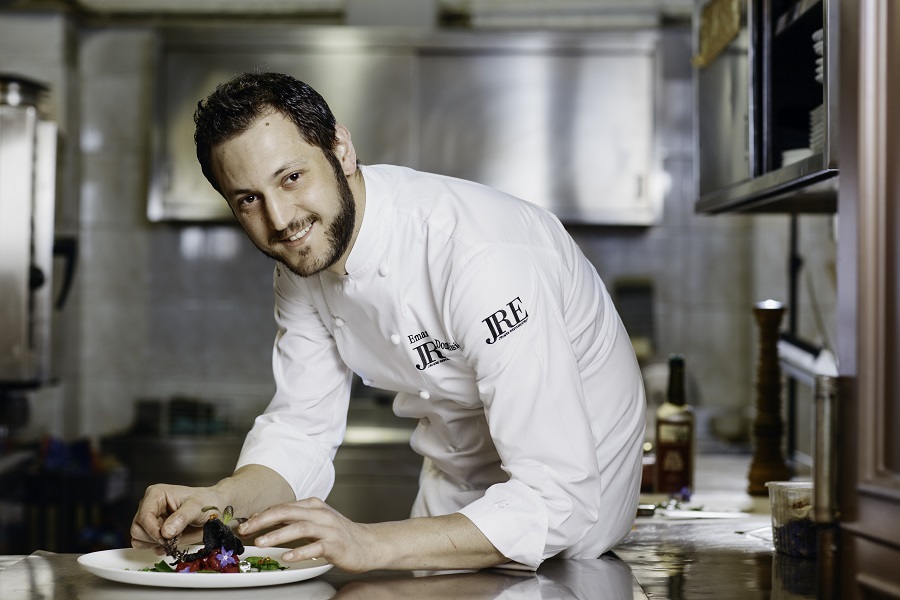
Croatian cuisine is getting more popular, and a LOT more creative. A new generation of chefs, coupled with higher standards in the luxury tourism sector have moved things forward. There are an increasingly number of gourmet choices and events taking place, a welcome trend that looks set to continue.
And this Saturday will see a great example of the creative flair of 10 of Croatia's brightest young chefs, cooking side by side with some of the brightest international talent from Italy, Holland, Slovenia, Germany and Switzerland. All are members of the prestigious JRE Jeunes Restaurateurs organisation. Chefs like Emanuele Donalisio, above, who will be cooking on Korcula at Lesic Dimitri Palace with rising star and resident chef, Marko Gajski.
Emanuele Donalisio comes from Ventemiglia, the region where Liguria and Piedmont meet France, in a complex and well-intertwined zone of culinary experiences united by a word “Riviera”. It is interesting to note that Emanuele restaurant Il Giardino del Gusto was part of the travel feature published in New York Times in September 2017, selected as an example of the gastronomy tradition and elements that form the heritage of this Italian region.
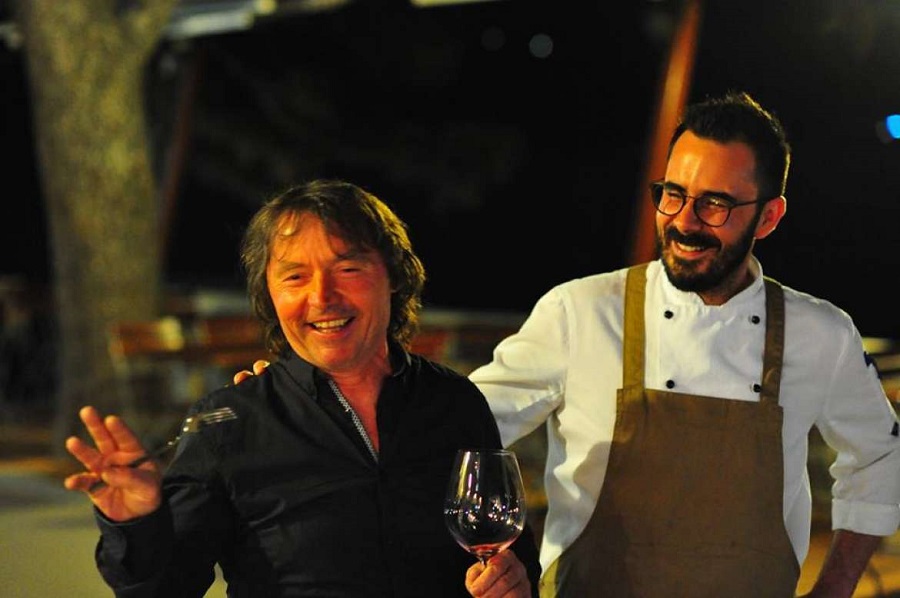
Marko Gajski, right, and pictured on the occasion of the opening night of Korculanske Pjatance Spring Food and Wine Festival in 2018, a celebration of the 20th anniversary of the famous Lumbarda Bire winery, is one of Croatia's brightest gourmet talents, and the Italian-Croatian duo will be one of ten cheffing partnerships in Croatian JRE restaurants all over Croatia. One of the aims of the event is a culinary cultural exchange between these exciting chefs - to learn from each other's heritage and methods - very much a two-way process.
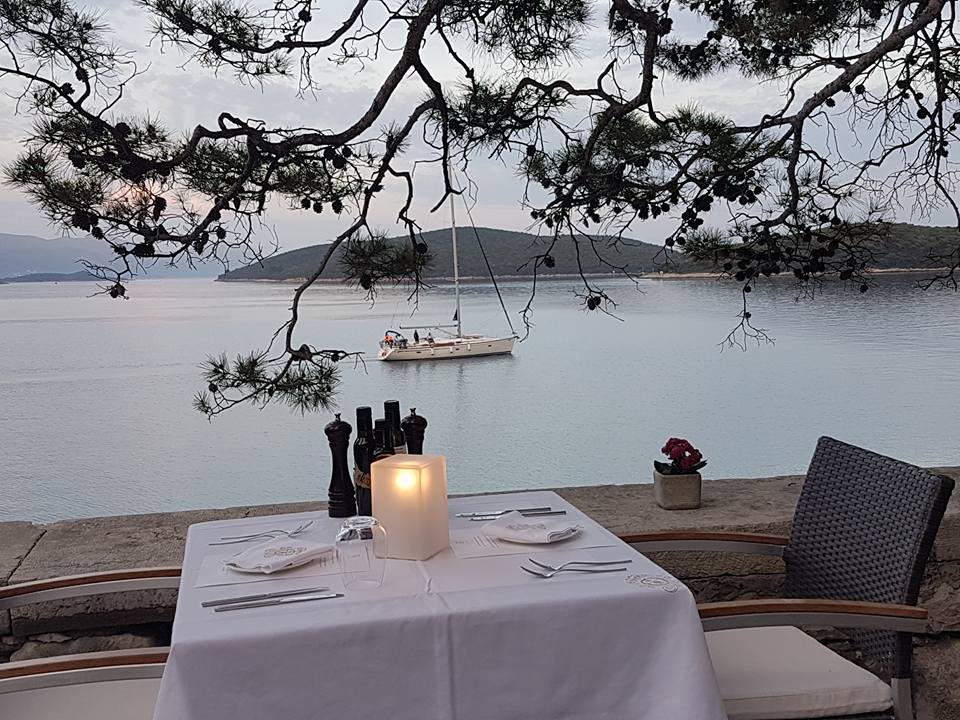
Add in the Lesic Dimitri terrace as one of the locations (TCN gladly accepted an invitation to this special evening and will be reporting back in full) and one of ten perfect Chefs on Sea locations is ready for another outstanding evening.
About JRE:
JRE is an association of young restaurateurs and chefs who want to share their talent and passion for food with likeminded people. We have over 350 restaurants and 160 hotels in total, spread across 15 countries: Australia, Austria, Belgium, Croatia, Germany, France, Ireland, Italy, Luxembourg, the Netherlands, Poland, Slovenia, Spain, Switzerland and the United Kingdom.
JRE chefs combine extraordinary talent, a deep passion for cuisine, a love of local produce, and a strong sense of tradition. Their cooking expertise paired with the outstanding atmosphere of their restaurants offers a truly incredible experience.
JRE membership is open to young restaurateurs and chefs under the age of 42. However, when members reach the age of 50, they are awarded ‘honorary’ status and join JRE’s ‘Table d’Honneur’.
At JRE, everything revolves around sharing, encouraging and inspiring passion and talent for food. Our young chefs show great solidarity with each other and are delighted to exchange their cooking knowledge and expertise. As a guest at a JRE restaurant, there’s no doubt you will reap the benefits of this collective passion.
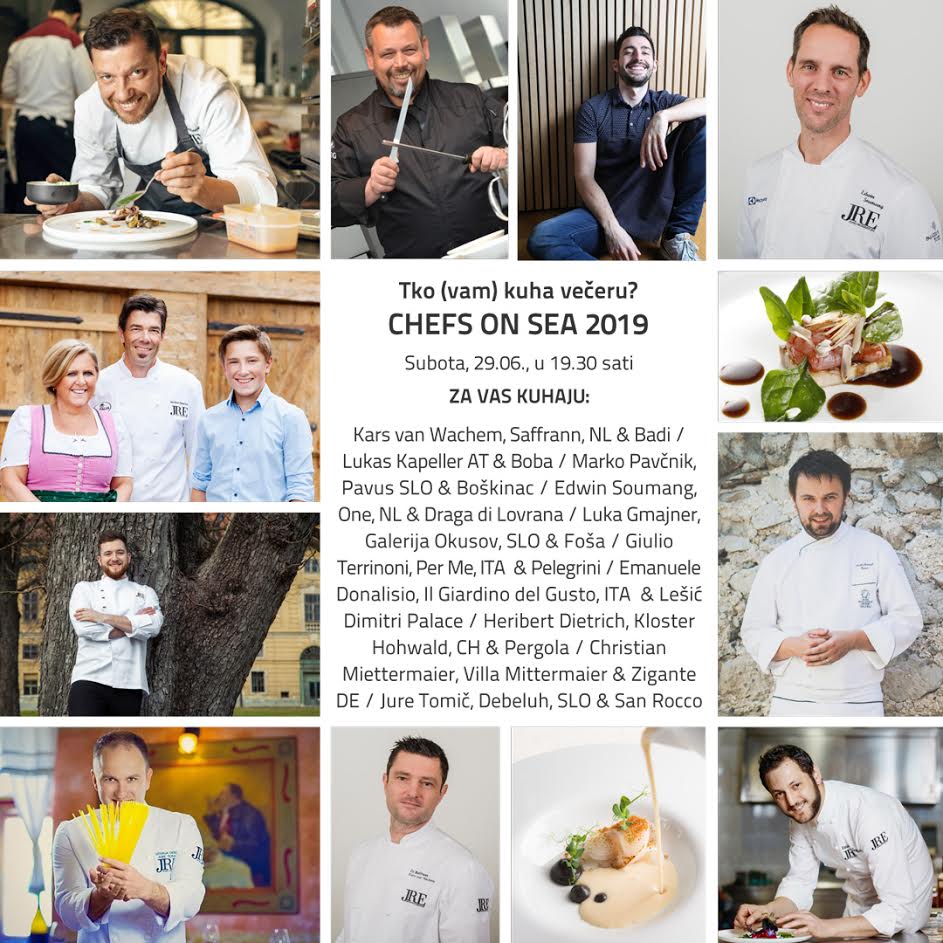
To learn more about JRE restaurants in Croatia - and to book a table for Chefs on Sea 2019 on Saturday - visit the official website.
Port 9: HTP Korčula Invests Two Million Kuna into Korčula Beach
As Poslovni Dnevnik/Marija Crnjak writes on the 7th of June, 2019, the hotel company HTP Korčula recently opened the new Korčula beach called Port 9, marking the biggest investment of this company in which a massive two million kuna was invested in just the very first phase.
Korčul'as Port 9 is also the first beach in Korčula to have been granted a county concession for as long as ten years. It is a public beach boasting over 1,600 square metres of promenade, ambient lighting, proper facilities for disabled people, a horticultural and a VIP zone for the guests of Korčula's new Port 9 Resort to enjoy, as well as other visitors to Korčula, and of course the area and the island's local population.
This investment followed the proper arrangement and adjustment of the Port 9 Resort's accommodation capacities back in 2017, the company then stated the fact that they enjoyed 6.1 percent higher revenue in the first five months of that year compared to the same period the year before, with the highest number of visitors coming from two European countries, the United Kingdom (24.3 percent), followed by the French (11.5 percent), and then by visitors from further away, more specifically from the United States (9.7 percent).
"Korčula is an avio-destination and therefore we welcome the increasing number of flights to Dubrovnik Airport. Each direct flight means a lot to us, which is shown in the rise of overseas guests staying in our facilities. We note 22 percent more guests from the United States compared to the same period last year, and the percentage of group travellers from Taiwan also increased. Taking into account the bad weather that wasn't tourism's and hospitality workers' favour, we're extremely satisfied with the results achieved,'' said Ivana Hatvalić Poljak of the HTP Korčula administration.
In addition, within the beach setting, a map and an Instagram location were also set up, marking the first such project in the Republic of Croatia, and the map boasts seven locations within the resort for Instagram photos taken by guests upon their arrival.
Follow our dedicated travel page for much more. If it's just Korčula you're interested in, give Total KorčulaKorčula a follow.
Successful Diaspora Returnee Stories: Domagoj Šain, Data Domain, Korcula
The 2nd International Conference on Diaspora Tourism took place in Split on May 17, 2019. TCN meets some of the returning diaspora who have made a success of life in Croatia. Next up, Domagoj Šain, who swapped life in Toronto to start his own business on the island of Korcula.
1. You are from Canada, returned to Croatia, something that many diaspora dream of doing. Tell us briefly about your journey.
I was born in Dubrovnik and when I was 10 years old living on the island of Korcula we left just before the war broke out, in 1989. As my mother was born in Toronto, Canada and my grandparents were there so my parents decided to move to Toronto at the time. In my stay in Toronto we moved all over but always were close to our Croatian community. I played soccer with my younger brother Frano for many years for our Toronto Croatia soccer club and as we got older we played professionally for the club in the Canadian soccer league.
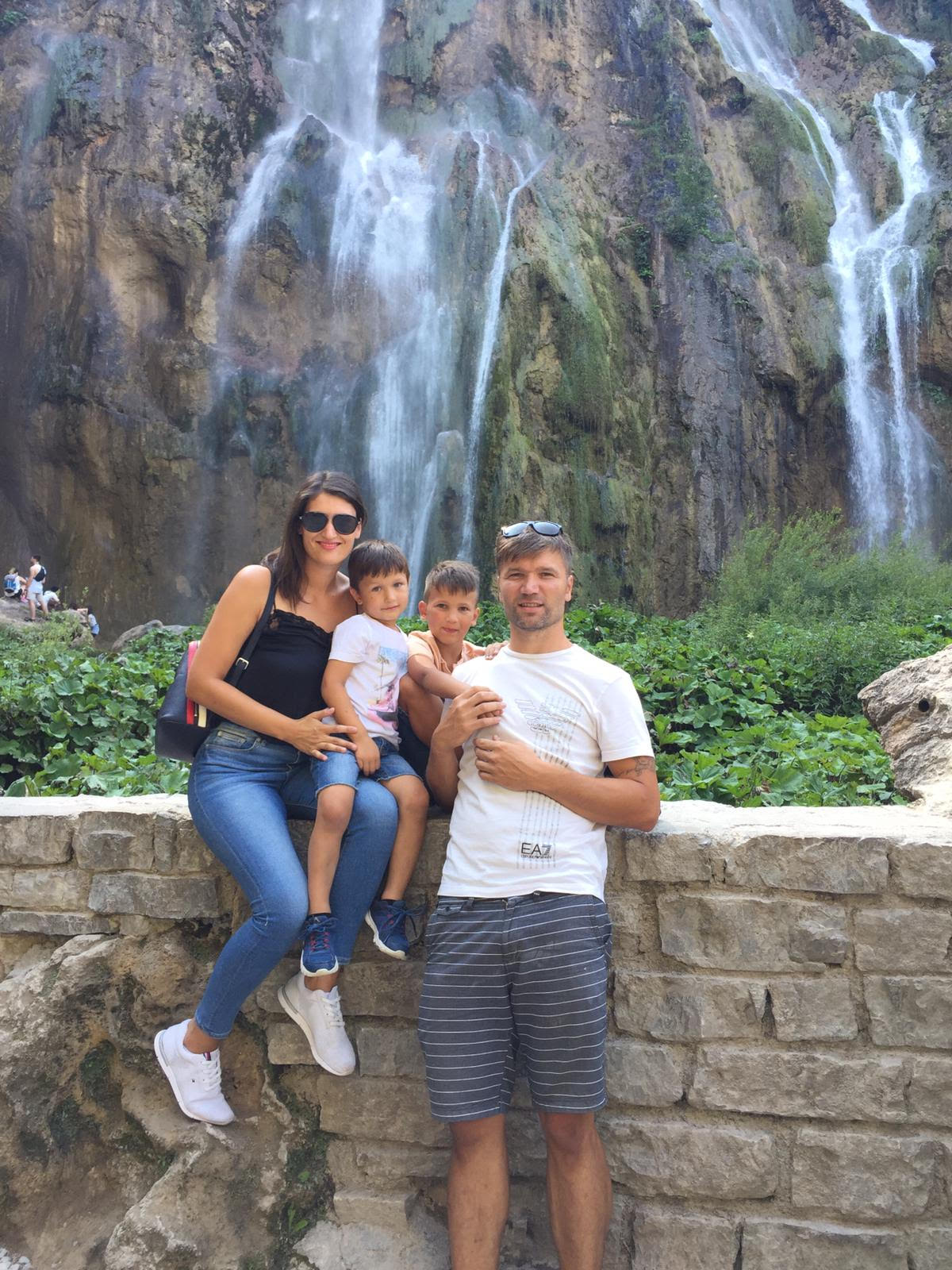
During my time at Toronto Croatia soccer club, I was the Captain and we won a couple of Canadian soccer league championships and received some trophies along the way. I completed my education at Seneca at York for Computer programming Database Specialist and began working in the field a couple of years after as I was unable to find the job in my field at the time. The problem was that in our Croatian community most were in the construction industry and there is lonely me in the IT industry.
This was until I met Mario Komparic a man that helped me get my first job as an Oracle DBA. Mario told me that it was great that I completed my education but now I needed to get Oracle certifications to get hired so that is what I did. I worked as an Oracle DBA for some of the best companies in Canada at the time like Research in Motion ( Blackberry ) in Waterloo. I enjoyed my time in Toronto very much but there was always something missing and that was Croatian and my Korcula. My dream and plan was always to come back to Korcula so I started working on that plan. I did not want to be on the road 4 hr a day Monday to Friday any longer as it was draining me out. Did not want to be stuck in traffic and dealing with the cold winters and only 1-2 week vacations. I began looking for work in Croatia in the IT filed but all the work was in Zagreb.
Zagreb is a beautiful city but there was no point of me leaving Toronto and heading to Zagreb at the time as I wanted to be closer to the Adriatic sea and the islands. I finally got a lucky break and got an interview at a telecom company in Split Croatia at H1 Telekom. So during Christmas time I went to Croatia for a visit and went for the interview and got the job on the spot. Came back to Toronto said goodbye to all my friends and family and left Toronto for good. It was not that hard leaving Toronto as I met my beautiful future wife Ivana and I knew she was waiting for me in Croatia. After working in Split for a couple of years my dreams came true and I opened up my own company Data Domain d.o.o where we provide remote Oracle Database service from our central office on the island of Korcula.

2. Looking back, what were your hopes, expectations and fears about moving to Croatia?
My only hope in my decision to return was to go to the beautiful country I left as a child of 10 years, with numerous opportunities I saw every year when I was there. I did not think about the possibility of corruption, about the dysfunctionality of state apparatus, I did not have fears of the health system, tax advantages or administrative illogicality. I did not have any fears, I did not want to have them because it might have affected my decision. If I went back 10 years ago I would have done the same thing right now as I just wanted to leave Canada and its hectic lifestyle. So leaving a city of more than 2.5 million to a village of 5 hundred is a pretty crazy leap for a 30-year-old at the time.
Looking back I was so excited that my extended family and Ivana was waiting for me. Also working for the one of the best IT companies at the time RIM with a great salary I took a job for a lot less in Split where I had to rent out place. I was just focused and was working on my Croatian dream to come true to live on my island of Korčula, to do the job I've been doing and that I love. The most important thing for me is a peaceful family life where my kids can safely play in the local park and in the front of the house, which I have today.
3. How supportive was your Croatian community back home at the time?
Zavalatica is a small settlement on the island of Korcula, where everybody knows each other. Through constant summer holidays, I have established friendships with people living there and my childhood friends. I started playing soccer for the local team in Smokvica “NK Jadran” and made some great friends along the way. Most importantly, on the island is my extended family and Ivana who could hardly wait to come back. Both of my grandparents were alive at the time and I was so happy that I spent the next couple of years around them. I was very close with both of them and it meant so much to me. One year after my return to Croatia, my parents and sister came along which made things much easier.
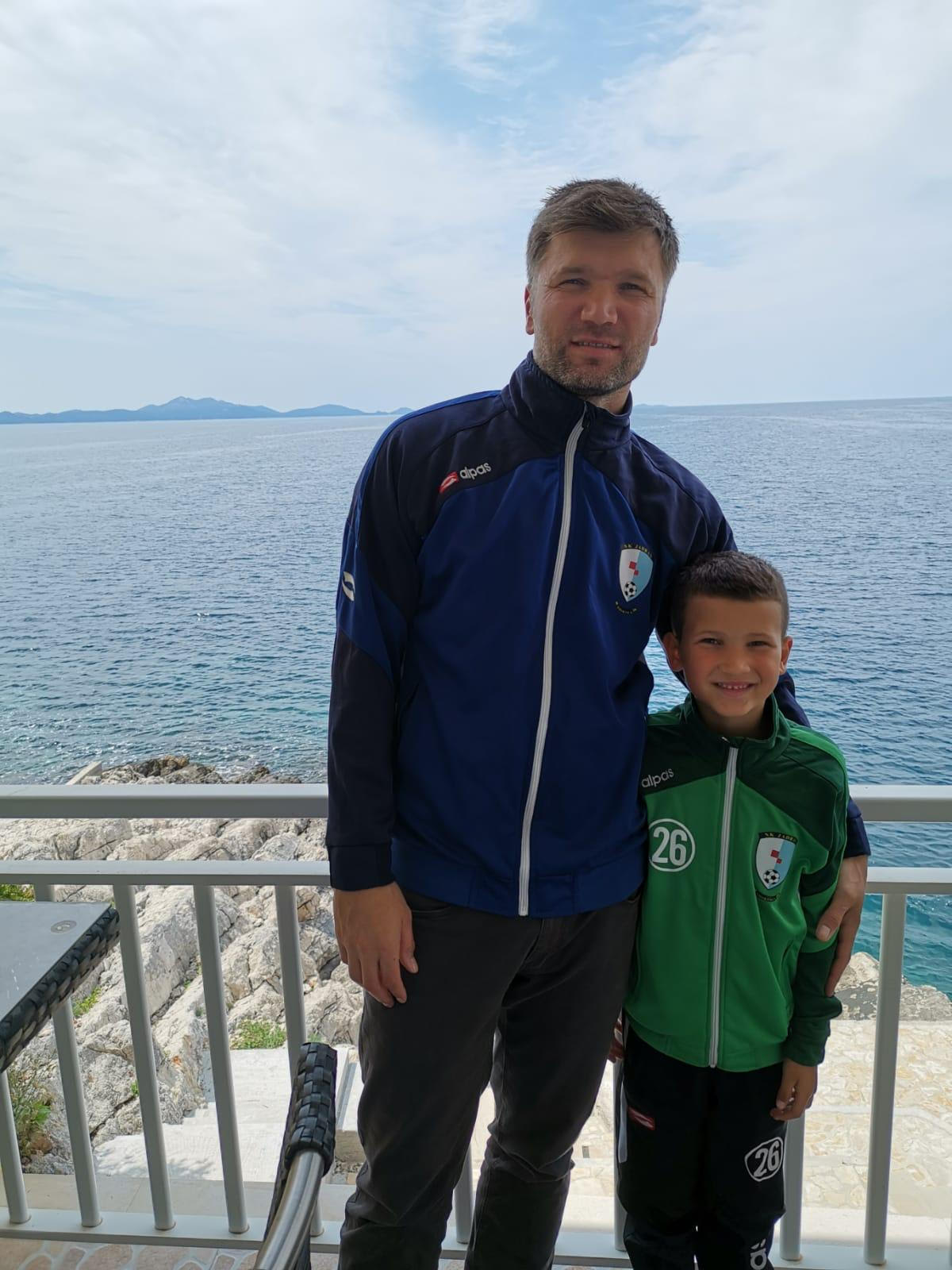
4. Many diaspora think of returning but few do. In truth, there is little information out there about real-life stories and help/info about the process. What advice do you have for those who are thinking about making the move?
Every new beginning is difficult but also exciting. It takes months to get used to the functioning of state apparatus as we from diaspora are used to something else. It took a little longer to get all the required paperwork as Croatia is a lot more laid back and everything is done at a lot slower pace then Canada so you will have to be prepared for that. My advice to those who want to succeed in Croatia is to work hard and take advantage of past experiences and work attitude you gained abroad. Bring that different mindset and look towards business opportunities as there are plenty especially in the tourism industry. Not to compare the state system with the state system you come from.
Follow your dreams, believe in what you've come to Croatia for. My dream was to come to the island of Korcula and open up my own IT company and provide remote Database services to clients all over the world. My dream came true and it was a lot of work and commitment and what helped me the most is the professionalism that I learned while working in Toronto. Do not criticize the country like most do but work for the better in the community and in private life. The opportunities for those who want to come are great you just have to come with a different mindset and a different vision at looking at things here.
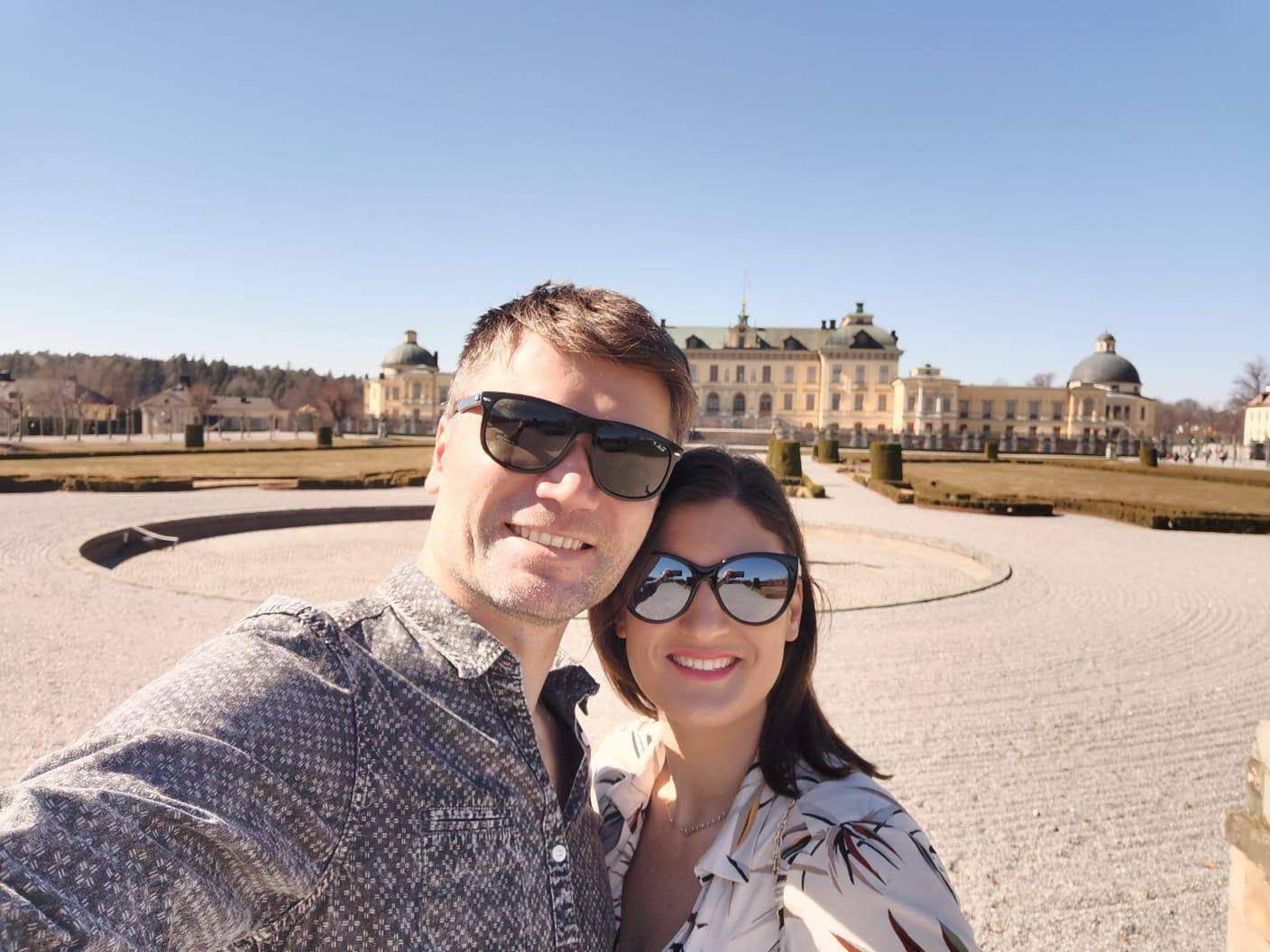
5. How were you perceived in Split as diaspora moving back - was the welcome warm?
There are still people that ask me why you came back, didn’t you have a better life in Canada. Why did you come when people from Croatia are leaving? I know that I made the right move for myself and my future family. Life in Canada is neither better nor lighter. What the media is presenting today about ideal life and "overnight success" in diaspora is far from the truth. I lived abroad for 20 years and I know how people live their life there and here. Yet most people are delighted with my life story. By first coming to Split then Korčula, I knew there were people around me who I could count on and are very fortunate for that.
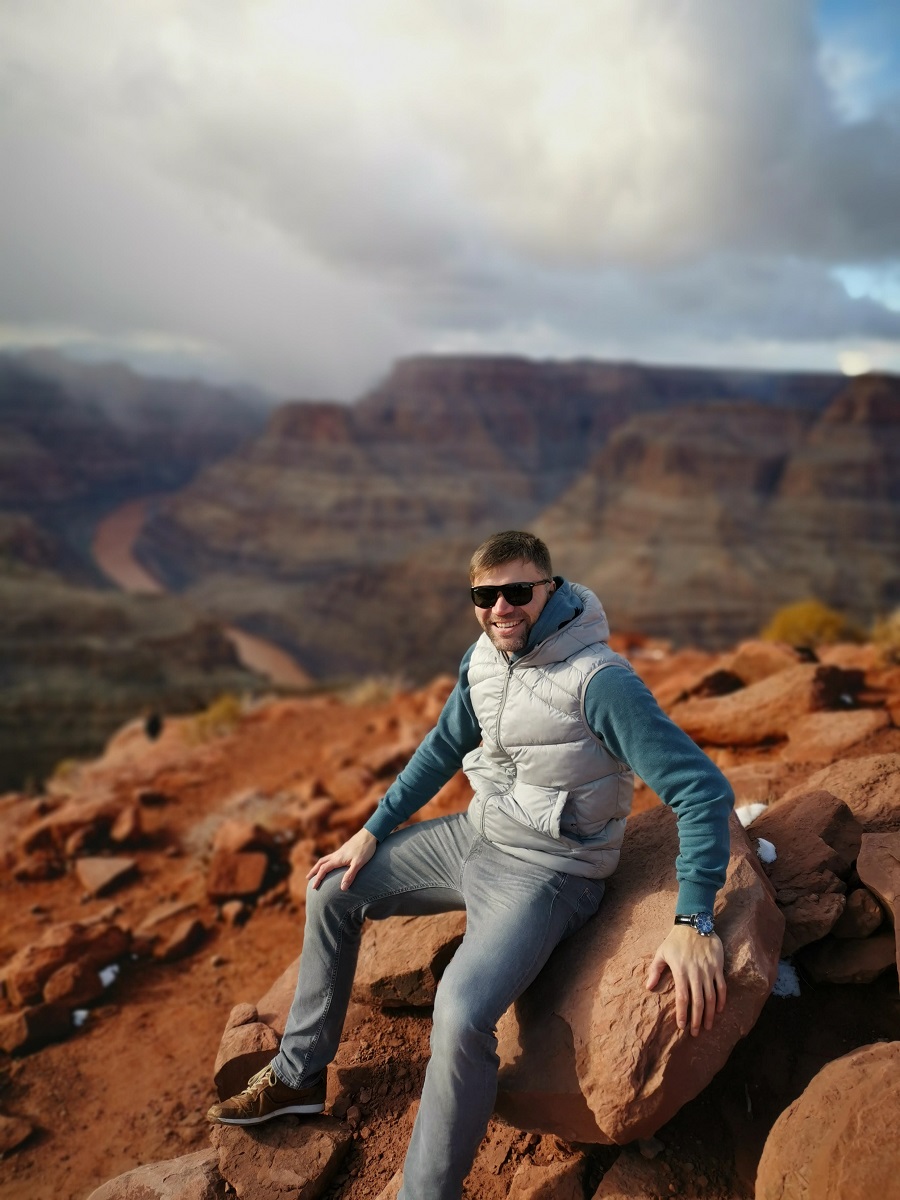
6. Through a lot of hard work, you have been very successful, while many foreigners have given up and left Croatia. What are the keys to success in doing business in Croatia in your opinion?
My key to success in Croatia is the life experiences and professional work attitude that I have learned abroad and have incorporated it in my work here. My clients know that I am always available especially when I work in an industry where we provide 24/7 services. Data Domain d.o.o is one of the first companies in Croatia that provides such services and doing it from an island is truly amazing. Many of the clients we have I have never met face to face as we mainly communicate from email or Skype. I could have opened my company anywhere in the world where there is internet but I decided that there is no better place for me or my family than here. It is also very important to keep up with the latest certifications to be competitive and keep up with the high changing IT trends. Also since Croatia is part of the EU we have started to take advantage of EU funds to grow and add different services into our portfolio.
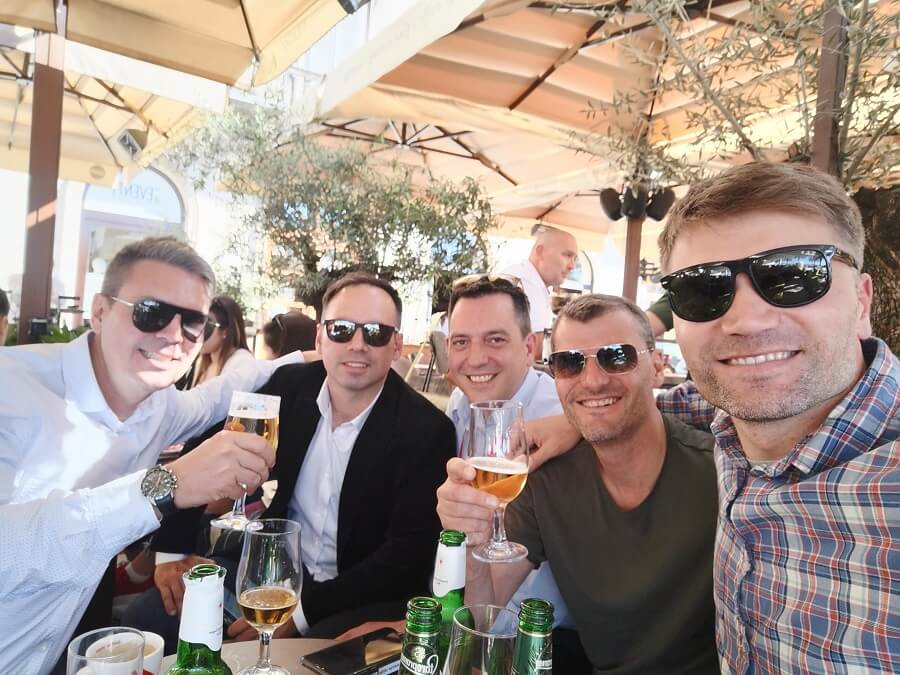
7. What is the diaspora community like in Dalmatia and how integrated is it with locals?
The diaspora returnees are were very well integrated with local people here on Korčula. Although there is no organized diaspora community on the island, but all somehow recognize each other, shared similar stories, socialize privately and want to achieve something positive for the community. I personally have many more diaspora friends living in Dubrovnik, Split and Zagreb. And if you ask me what that diaspora community looks like, I will say a community of outstanding, business-minded people, that all love Croatia and its lifestyle, who are not burdened with the negative we often see in people who are there all their lives.
8. And finally, a word on this conference. How was it for you, and what were the main take-home points?
I am very proud that I was invited and was on one of the panels on the Diaspora conference. Mr. Dan Maček and the organizers did a great job and I can’t wait for the next one. Hopefully next year the conference can during July/August so there will be more diaspora on hand for the conference. I hope we have helped some diaspora make the same move we all did and that our stories will make their move easier. Our diaspora needs to understand that it is a lot easier now as there are lots of groups out there the can help in the transition.
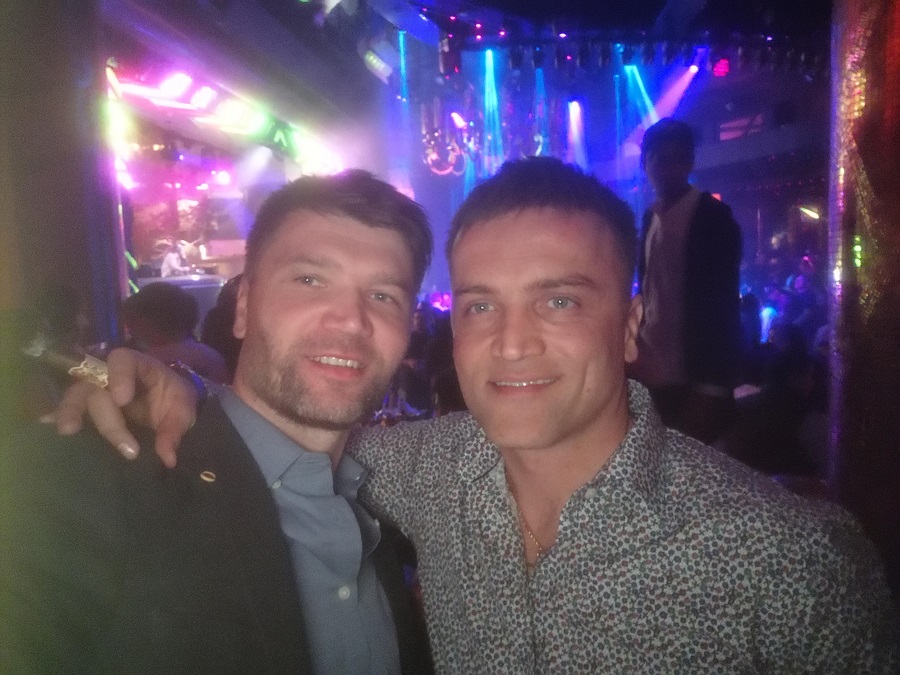
At the conference I met lots of different and interesting people in different industries not just tourism which was nice for me as I am not also just focus on that industry. But tourism is an industry that I will be focusing more on in the future as the potential is great especially on the island of Korčula as it is still very untouched.
You can learn more about Domagoj's company, Data Domain on the official website, or connect with him on LinkedIN.
For more on the Croatian diaspora, check out the TCN dedicated section.
New Catamaran Lines Presented, to Operate in Summer 2019 Season
In the last several days we've received three separate reports of new catamaran lines introduced for the summer season of 2019, with the intent of inter-connecting Croatian islands. The fact that Croatian islands were often perceived as not inter-connected enough, and that you often had to go to Split in order to get to another island which was in fact quite close was often listed as one of the bigger problems for tourists in Croatia.
Well, that seems to be changing: during summer 2019, there will be at least three new catamaran lines which will help fix that! Those are:
- Split Airport - Split Town - Bol on Brač Island - Stari Grad on Hvar Island, operated by https://splitexpress.com/en
- Rijeka - Krk (Krk) - Lopar (Rab) - Novalja (Pag) - Zadar, operated by G&VLine
- Dubrovnik - Korčula (Korčula) - Hvar (Hvar) - Bol (Brač) - Split, operated by Jadrolinija.
The last of the three mentioned existed last year too, as we've made clear in our 2018 guide on how to get to Korčula Island. Obviously, it has proven to be a success last year, so Jadrolinija has decided to bring it back, starting operation on May 30th, and lasting until the end of September. The timetable (link to the .pdf document) is similar to last year's, with the key difference being that it will be departing Split 45 minutes earlier in the afternoon (at 15:30, while last year it was at 16:15), thus arriving in Dubrovnik also 45 minutes earlier. In addition, in Korčula, the ferry will not be docking at Dominče ferry port, rather at either the east or the west port in Korčula town itself. The very modern catamaran Jelena will be carrying passengers on this line.
Rijeka - Krk - Rab - Pag - Zadar is a new line, which connects the islands that are close to one another, but have never been well-connected. Now the new catamaran line will give the passengers the chance to island-hop, but also to make a same-day visit to the islands, as it will leave Rijeka in the morning, arriving in Zadar around midday, and you'll be able to from Zadar to Rijeka at around 8 pm. For a detailed timeline, click here (link to the .pdf document).
The timetable for the catamaran line connecting Split Airport, Split Town, Bol on Brač and Stari Grad on Hvar is a bit more complicated, but you can see it below:
Game of Thrones Prequels Rumored to be Filmed in Korčula?!
In the week right after the long-awaited and controversial finale of the HBO series Game of Thrones, which was partially filmed in Croatia, Dora Lozica reports for Dubrovački Vjesnik that a group of high-level HBO executives and producers have arrived to Korčula to what is speculated to be a scouting expedition in preparation for filming of some of the potential Game of Thrones prequels.
Dubrovački reports that the HBO people arrived to Korčula on a private yacht from Dubrovnik, that they spent the night at the Liburna hotel and that they shared with the staff at the hotel that they're scouting the locations for some shoots on the island.
Some of the HBO executives that were seen on Korčula include well known names such as Mark Mylod, who directed 6 episodes of Game of Thrones (none of the episodes in the final season), but is best known for his work on the TV show Shameless.
Holly Rymon, the producer of such hits as John Wick, Spider-Man and Men in Black, as well as Patrick Capone, cinematographer and producer on numerous hits, such as Philadelphia, Spotlight, Girl on the Train and many other were seen walking around the Korčula Old Town and the surroundings, probably looking for perfect locations for an upcoming project. They left Korčula after having spent one night, and the hotel staff has shared with the press that they've made further reservations at the hotel and that they plan to come back in July (one can only guess that they won't be thrilled with the indiscretion of the hotel staff).
There are no indications as to what the project is that HBO is considering shooting on Korčula. However, HBO's CEO recently confirmed that several Game of Thrones prequels are being considered by the company, and one of the projects tentatively titled Bloodmoons is already being filmed in Belfast.
We've already written extensively about the missed opportunity that HBO had given Croatia when they decided to film Game of Thrones in Dubrovnik, Split, Klis and other Croatian locations; maybe if it really happens, the filming of the Game of Thrones prequel will be an opportunity to fix those mistakes!
World's Biggest Welcome in Croatia: Day 51 - Korčula to Saplunara (Bike, Kayak, Foot)
May 12, 2019 - Putting Croatian adventure tourism on the map, with the biggest welcome in the world. Day 51 of this incredible 2011 adrenaline trip covering 2,500 km along the Croatian coast.
The World's Biggest Welcome, an ambitious adventure tourism project in 2011 in Croatia enters Day 51 of this 2019 appreciation of one of the finest tourism promotion projects ever in Croatia.
The plan? To showcase the diversity and fabulous offer of adventure tourism in Croatia by following a GPS route the length of the Croatian coast in the shape of the word 'Welcome' - thereby creating the biggest welcome in the world from a hospitable tourism country.
Day 51 moved from Korčula to Saplunara on the island of Mljet.
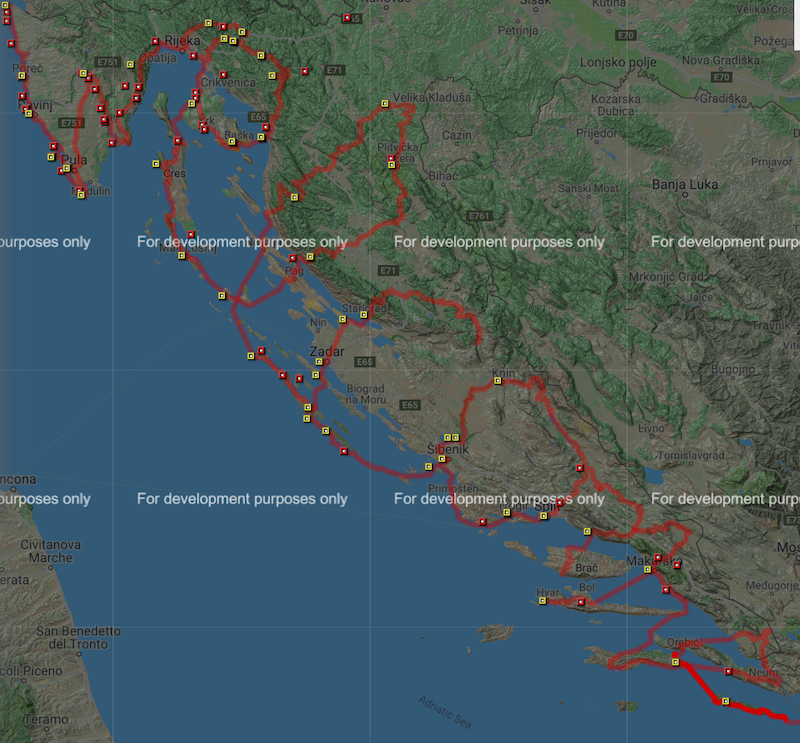
74 kilometres for the day: 9 km bike ride from Korčula to Lumbarda, followed by 20 km by kayak from Lumbarda to Pomena, and 45 km walking and cycling from Pomena to Saplunara to continue forming the ‘E’ in ‘Welcome’.
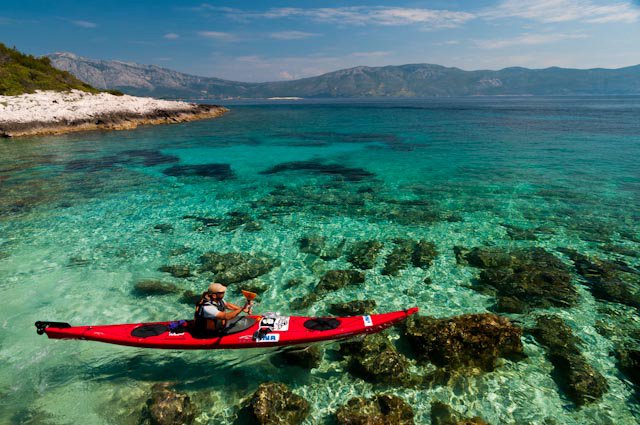
Day 51 began in Korčula at cape Raznjic before Lacko set off towards Mljet.
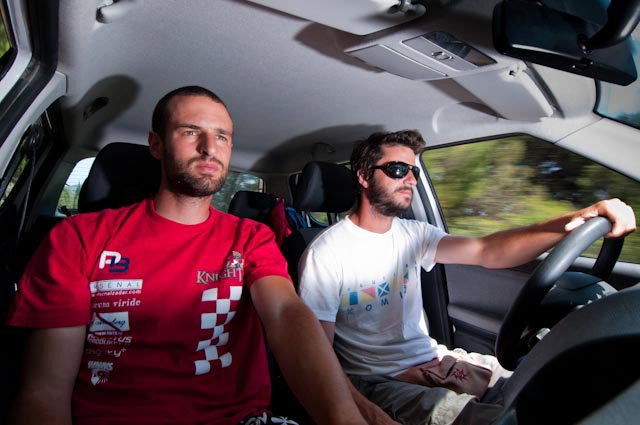
The rest of the team on their way to Pomena.
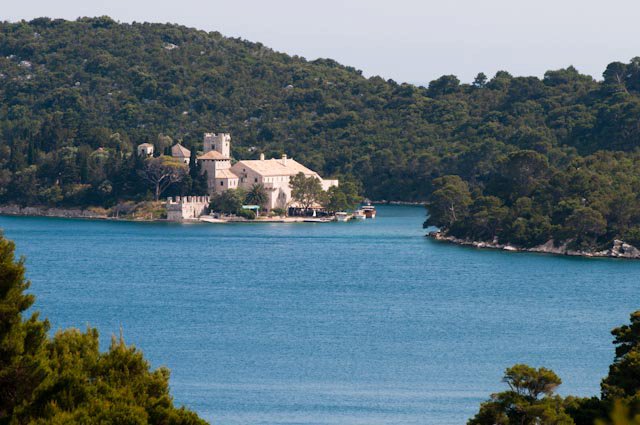
The team arrived at Mljet National Par. You can spot the Benedictine monastery and church on the island of Sveta Marija in Veliko jezero.
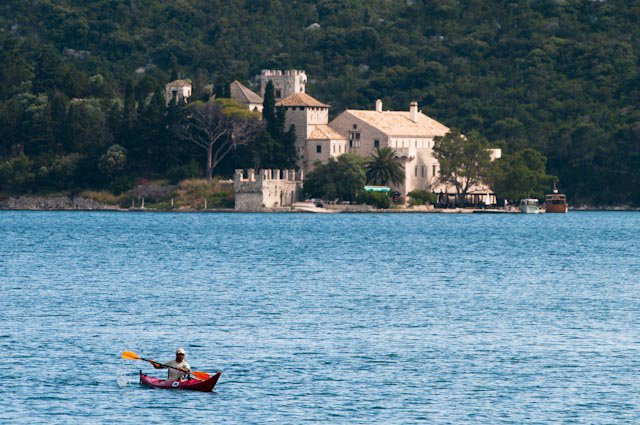
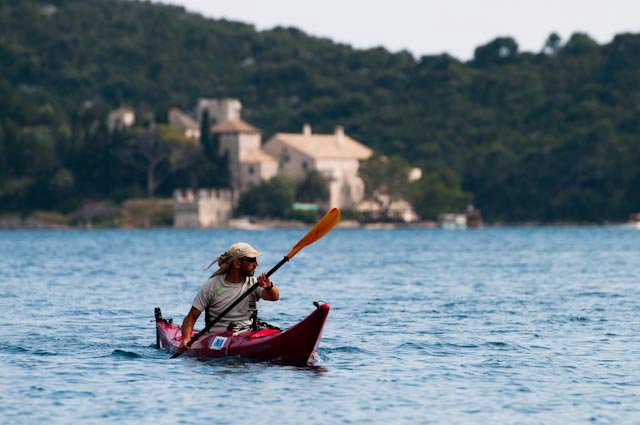
And Lacko.
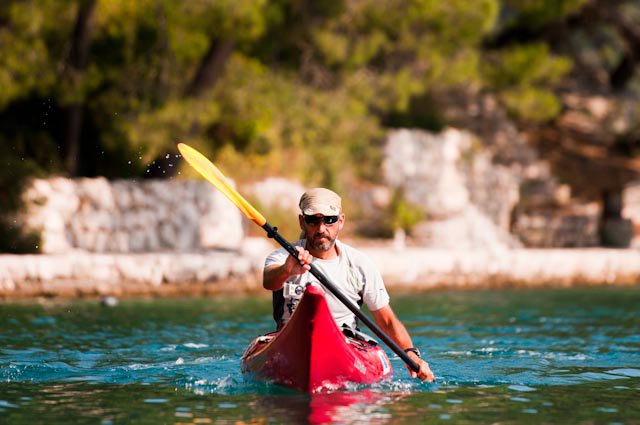
Lacko arriving at the dock on Veliko jezero.
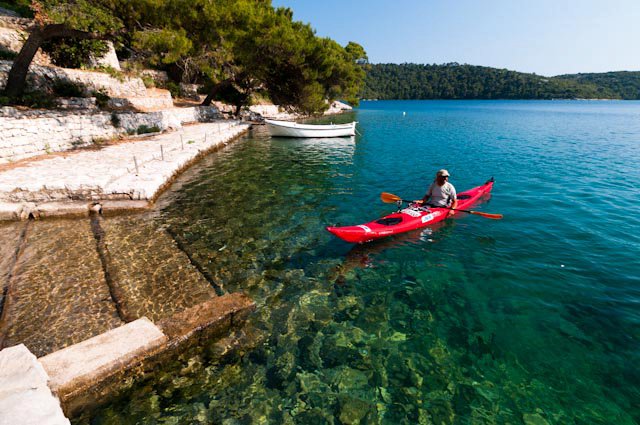
The dock on Veliko jezero.
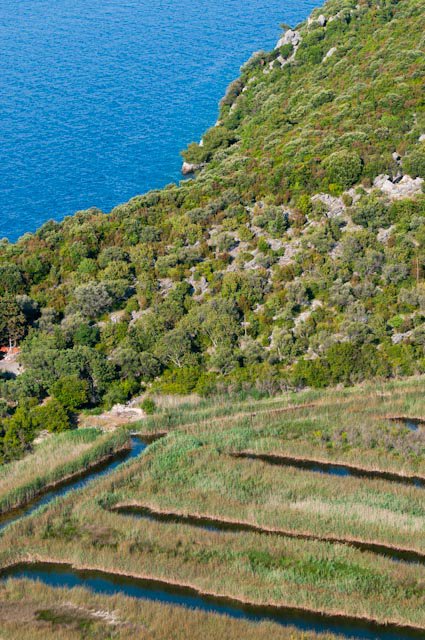
The team spotted sugar cane on the island of Mljet.
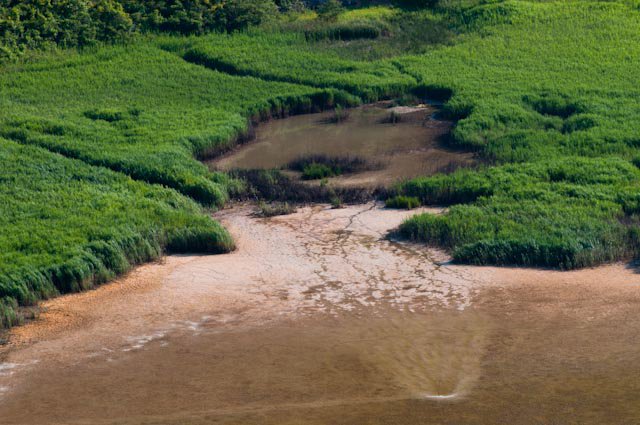
And some mud.
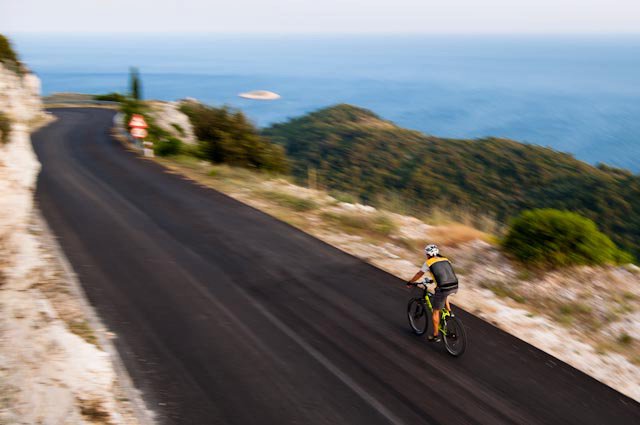
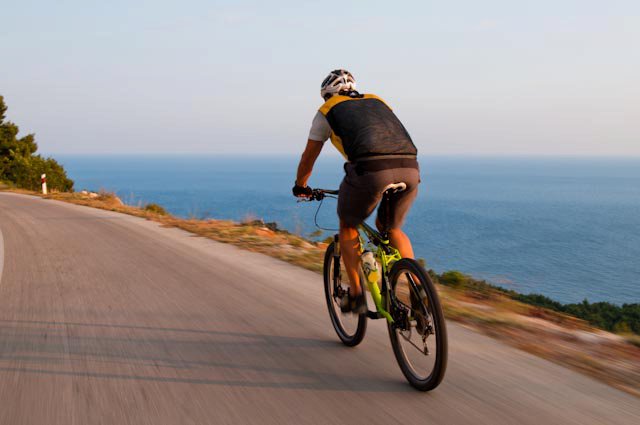
Lacko began cycling towards Saplunara.
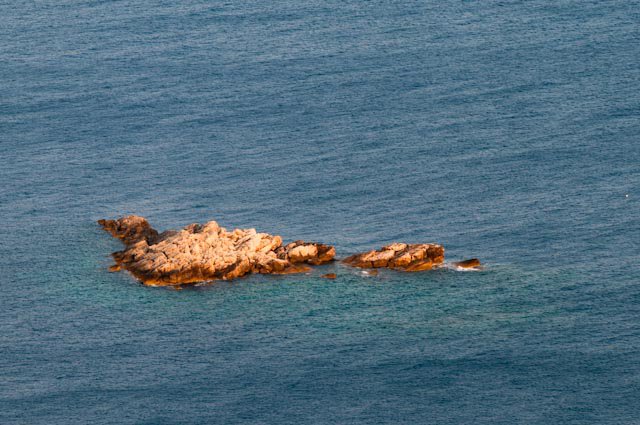
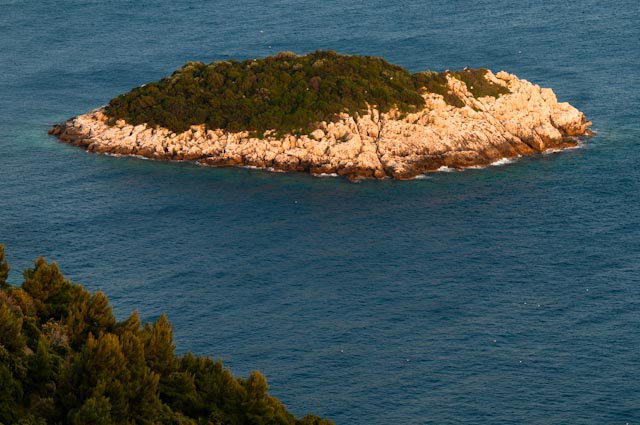
And spotted small islands along the way.
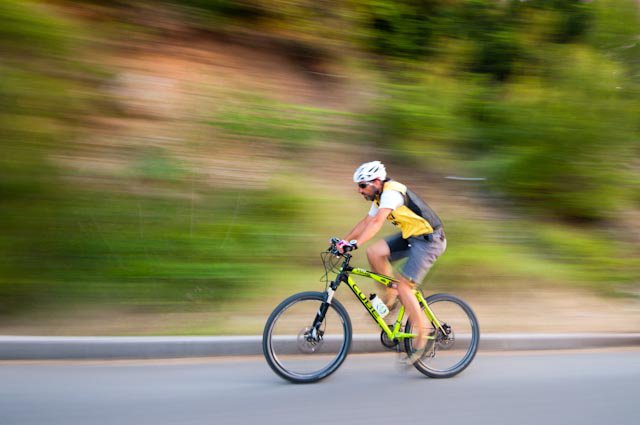
A quick descent to Saplunara.
A key part of the project was promoting tourism, and the official website has details of the key places visited during the day.
You can see the entire project on the Welcome website, as well as much more of Luka Tambaca's stunning photography on the Welcome Facebook page.
Tune in tomorrow for Day 52, the final day of the journey as Lacko moves from Saplunara to Dubrovnik.
To follow the whole project from the start, follow the dedicated TCN page.
World's Biggest Welcome in Croatia: Day 50 - Ploče to Korčula (Kayak, Bike, Foot, SUP)
May 11, 2019 - Putting Croatian adventure tourism on the map, with the biggest welcome in the world. Day 50 of this incredible 2011 adrenaline trip covering 2,500 km along the Croatian coast.
The World's Biggest Welcome, an ambitious adventure tourism project in 2011 in Croatia enters Day 50 of this 2019 appreciation of one of the finest tourism promotion projects ever in Croatia.
The plan? To showcase the diversity and fabulous offer of adventure tourism in Croatia by following a GPS route the length of the Croatian coast in the shape of the word 'Welcome' - thereby creating the biggest welcome in the world from a hospitable tourism country.
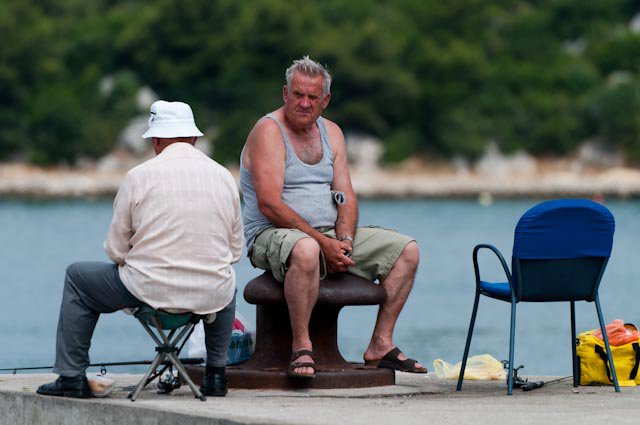
Day 50 moved from Ploče to Korčula.
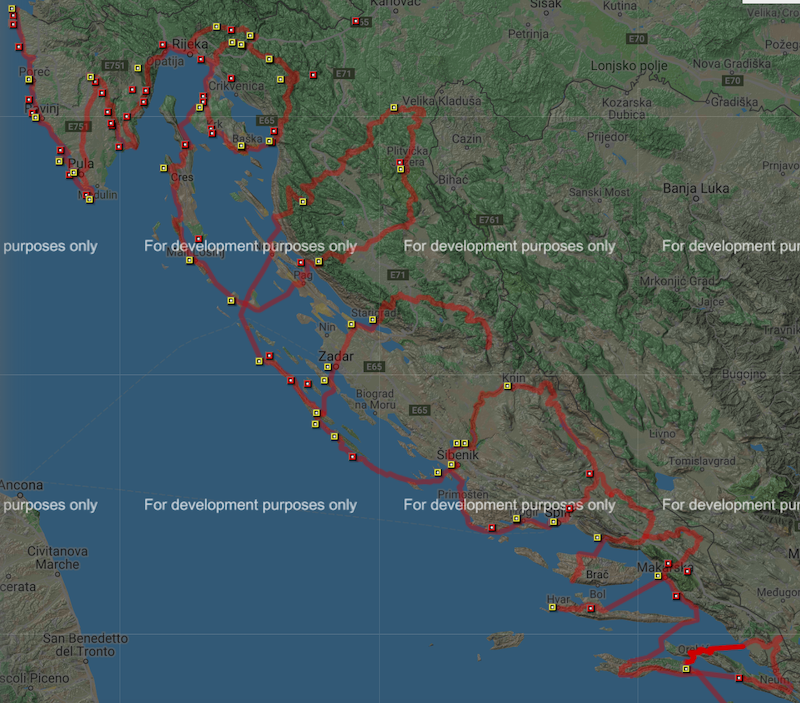
52 kilometres for the day: 17 km kayak ride from Ploče to Trpanj, followed by a 10 km bike ride from Trpanj to Donja Vručica, 20 km on foot from Donja Vručica to Orebić, and 5 km SUP from Orebić to Korčula to continue forming the ‘E’ in ‘Welcome’.
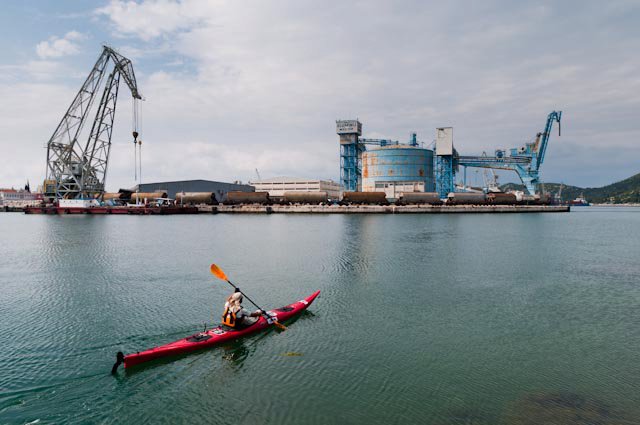
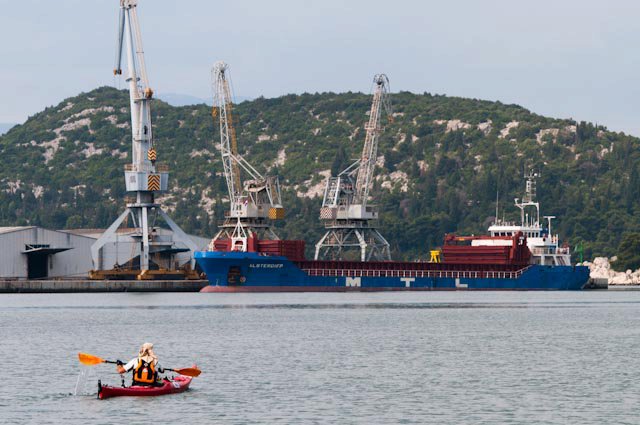
Day 50 set off on kayak from Ploče.
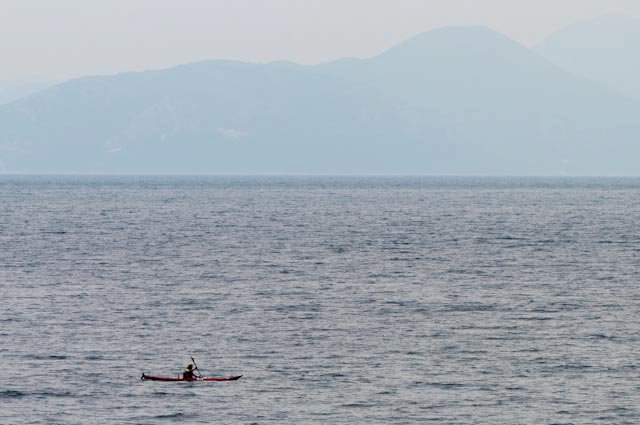
And Lacko beginning the journey to Pelješac.
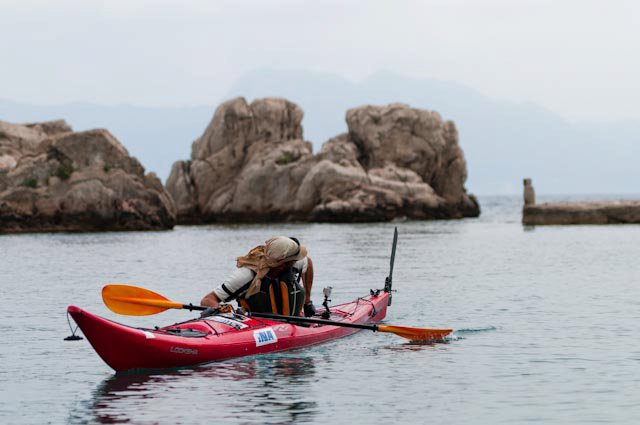
But first, Trpanj.
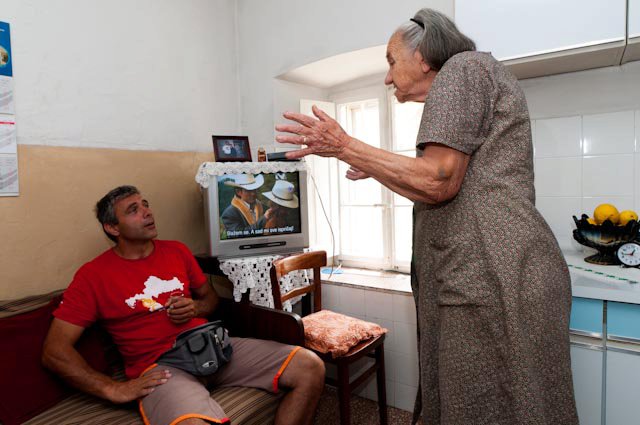
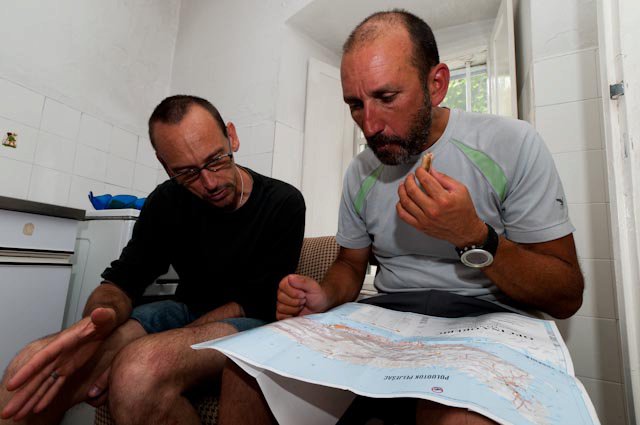
After Cedo presented the team's plan to climb St. Ilija, they were invited for a drink of discouragement.
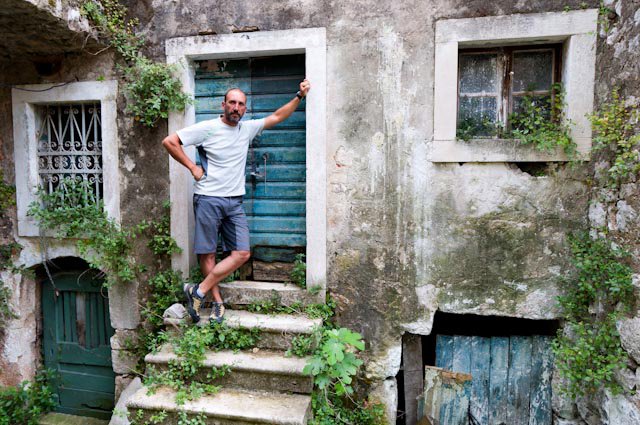
Lacko visited the birthplace of his grandfather in Donja Vrucica.
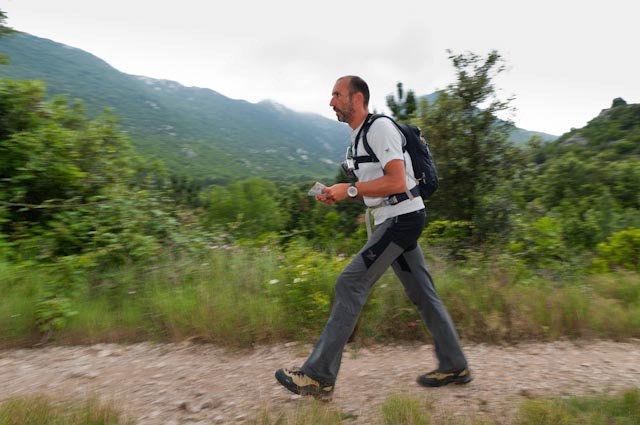
And then they continued on foot to Orebić.
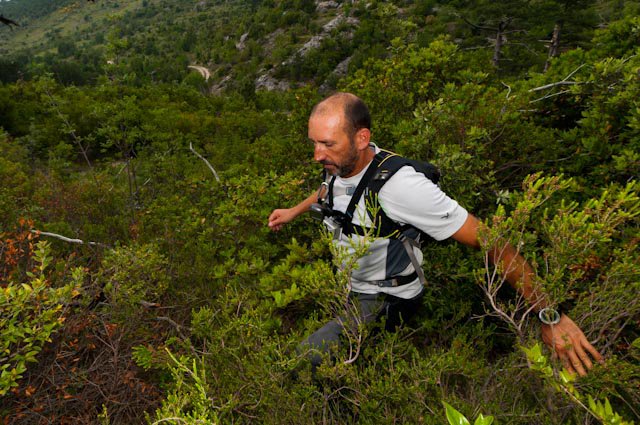
They had to make their own path to Orebić.
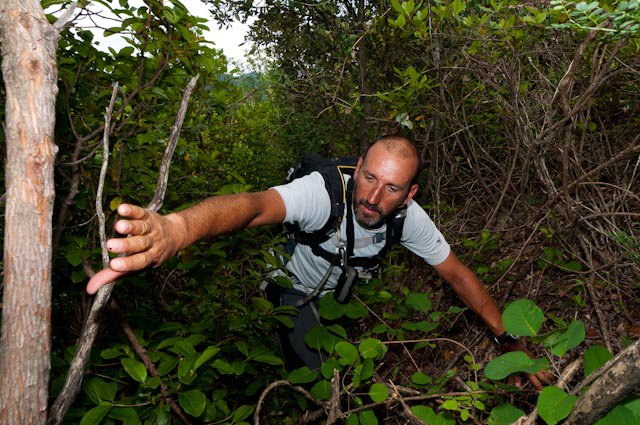
The plan was to get through to the old path built by Napoleon. Apparently, no one had been there for decades.
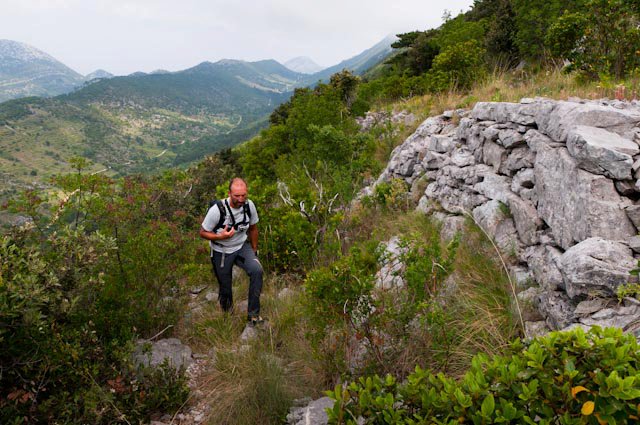
They managed to get through to Napoleon's forgotten path.
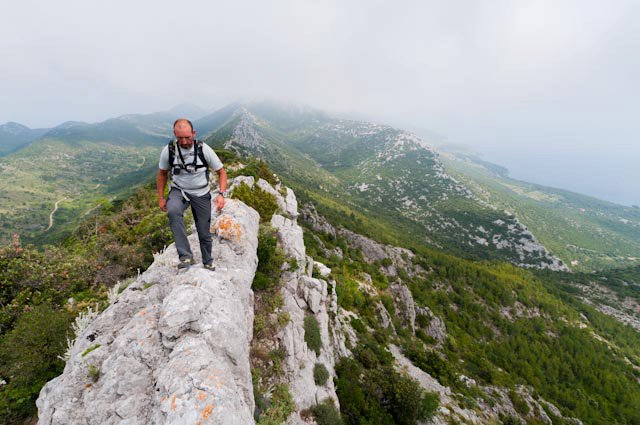
Which took them to the reef, from where they made it to the top.
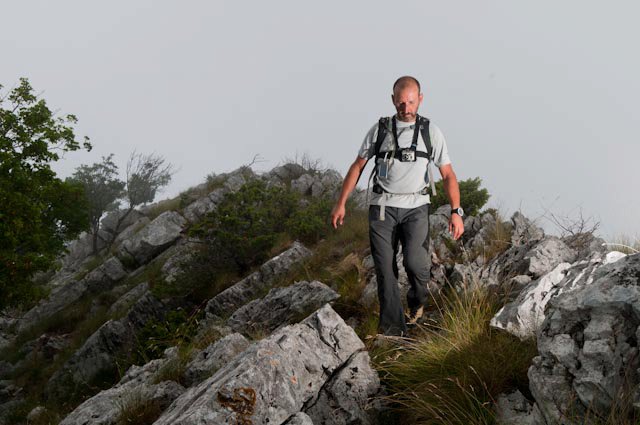
Walking on a cloud on St. Ilija.
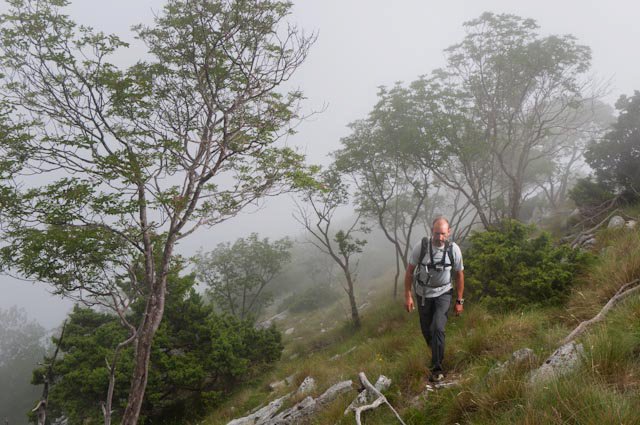
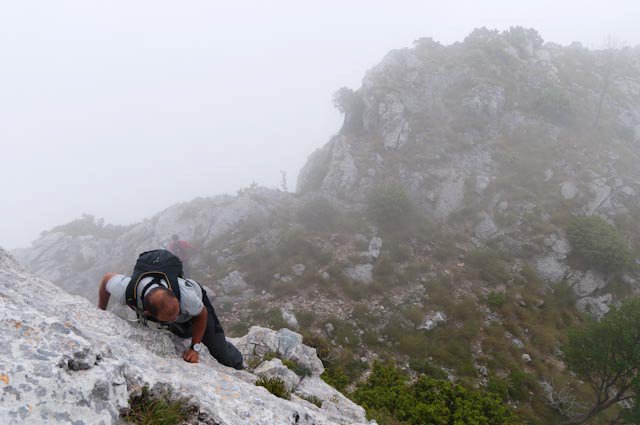
The further they climbed, the thicker the clouds.
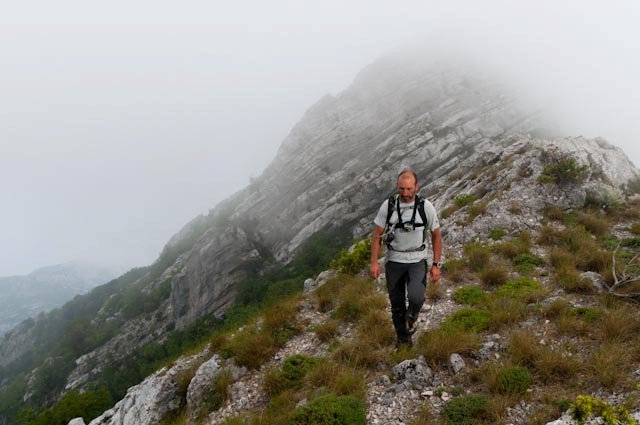
But the clouds started to clear.
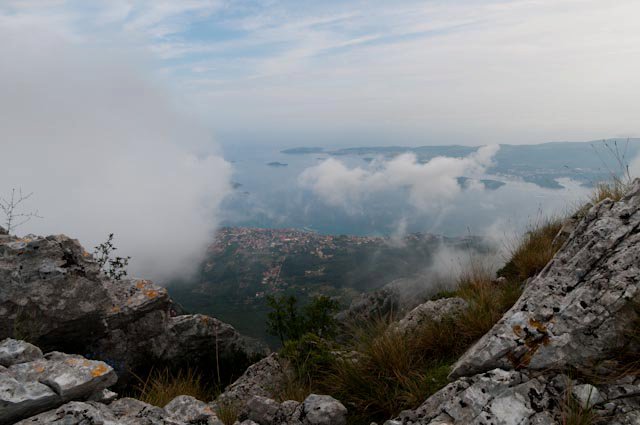
And they opened to a view of Korčula.
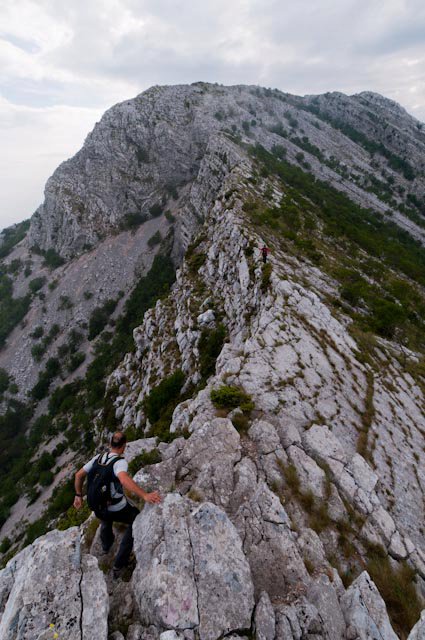
They could finally see the top of St. Ilija!
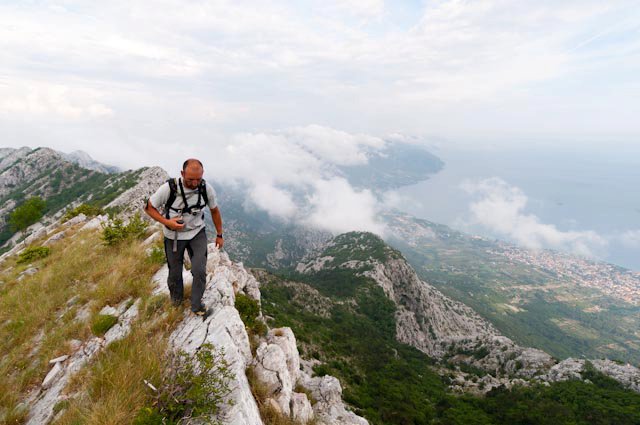
Total bliss.
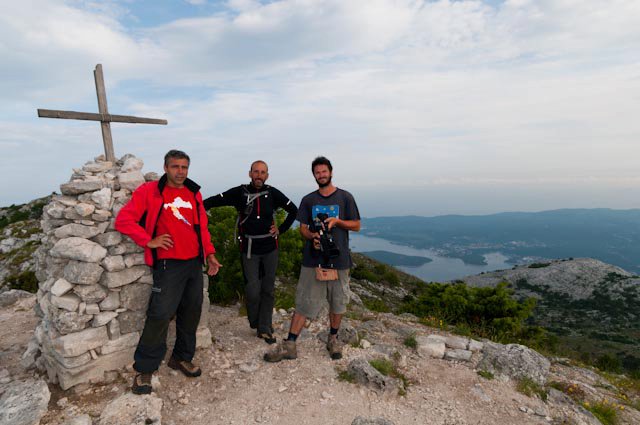
St. Ilija 961m.
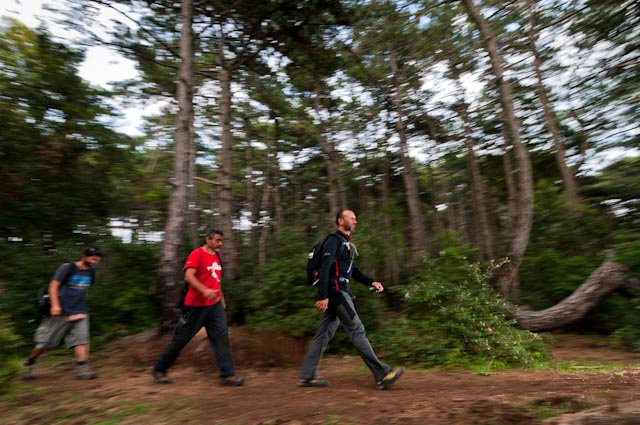
The group then made it down through pine forest.
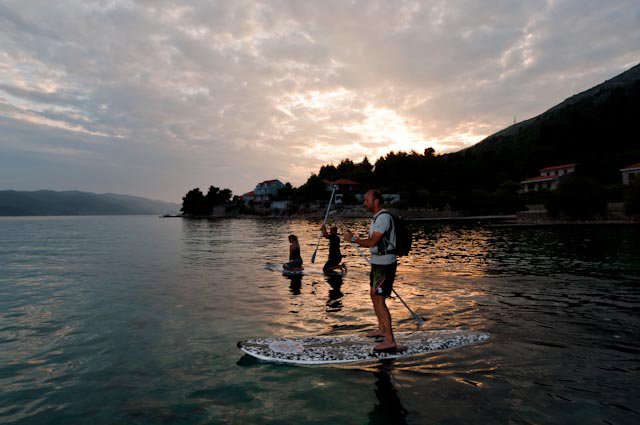
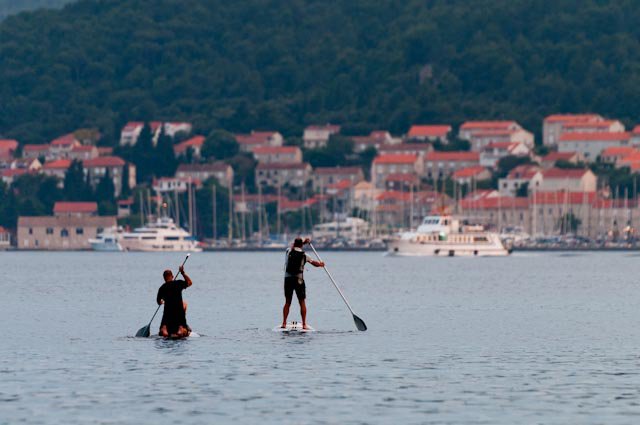
And Lacko paddled to Korčula.
A key part of the project was promoting tourism, and the official website has details of the key places visited during the day.
You can see the entire project on the Welcome website, as well as much more of Luka Tambaca's stunning photography on the Welcome Facebook page.
Tune in tomorrow for Day 51, as Lacko moves from Korčula to Saplunara.
To follow the whole project from the start, follow the dedicated TCN page.
World's Biggest Welcome in Croatia: Day 47 - Lovište to Lumbarda (Kayak, Bike)
May 8, 2019 - Putting Croatian adventure tourism on the map, with the biggest welcome in the world. Day 47 of this incredible 2011 adrenaline trip covering 2,500 km along the Croatian coast.
The World's Biggest Welcome, an ambitious adventure tourism project in 2011 in Croatia enters Day 47 of this 2019 appreciation of one of the finest tourism promotion projects ever in Croatia.
The plan? To showcase the diversity and fabulous offer of adventure tourism in Croatia by following a GPS route the length of the Croatian coast in the shape of the word 'Welcome' - thereby creating the biggest welcome in the world from a hospitable tourism country.
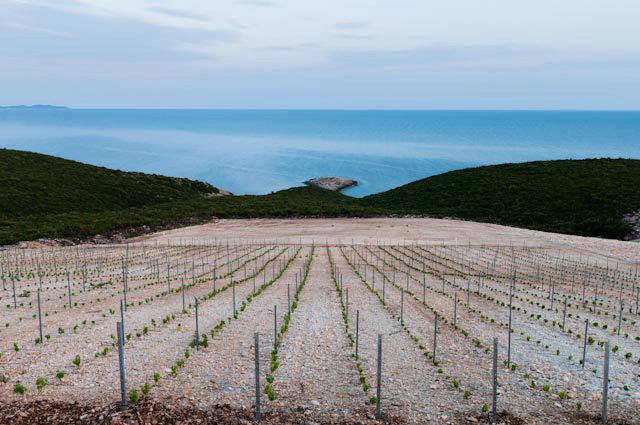
Day 47 moved from Lovište to Lumbarda.
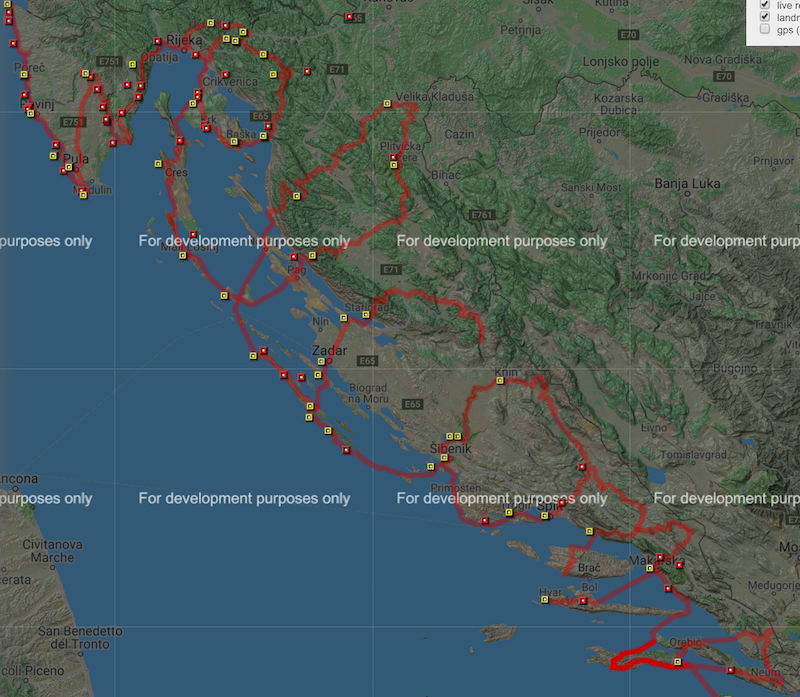
68 kilometres for the day: 20 km kayak ride from Lovište to Blato, followed by 33 km by bike from Blato to the bottom of Klupca, and a 15 km kayak ride from the bottom of Klupca to Lumbarda to complete forming the ‘M’ in ‘Welcome’.
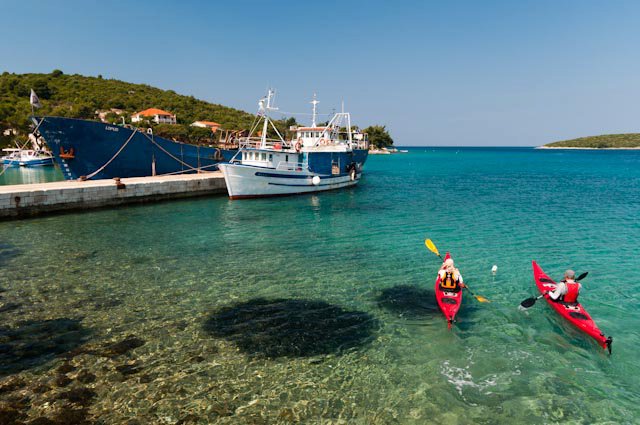
Sajko and Lacko sett off from Lovište towards Korcula.
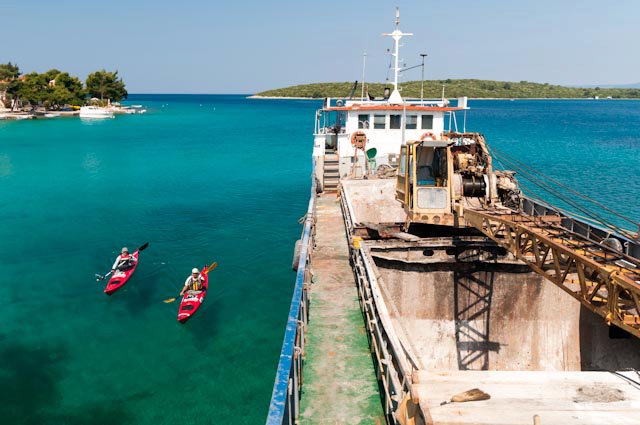
Maneuvering around the boat.
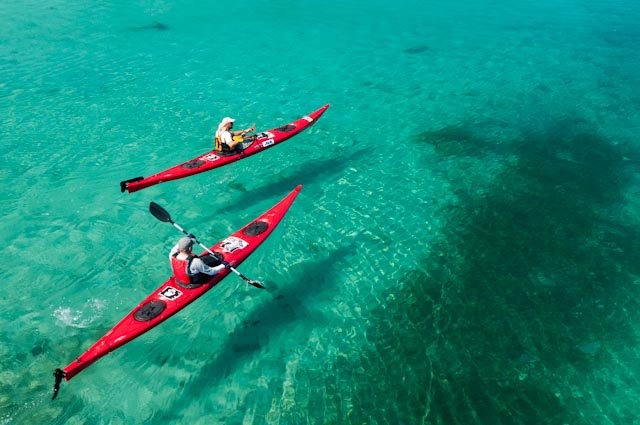
And the deep shadows in the sea.
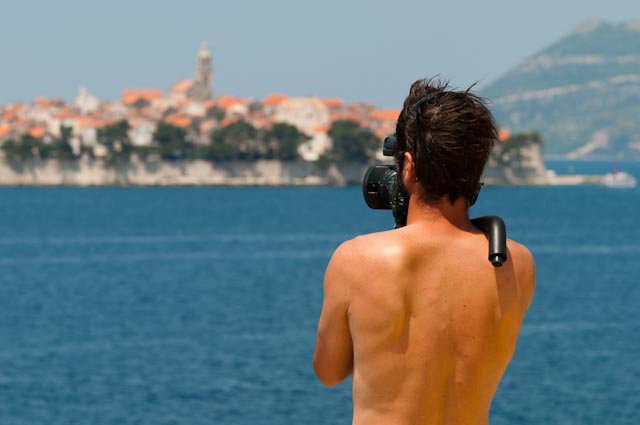
Marko snapping Korčula in the distance.

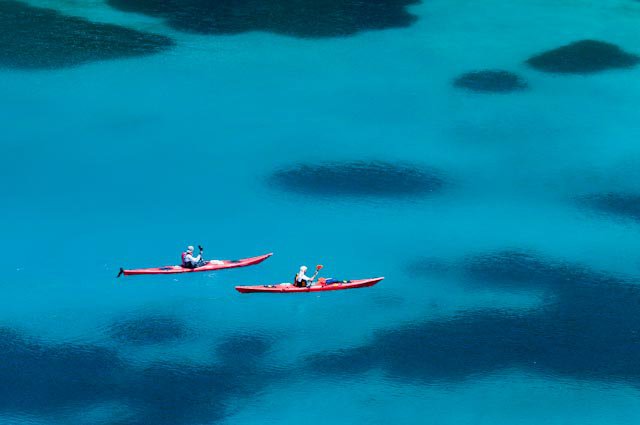
Babina - Tea, Sajko and Lacko arriving at the island of Korčula.
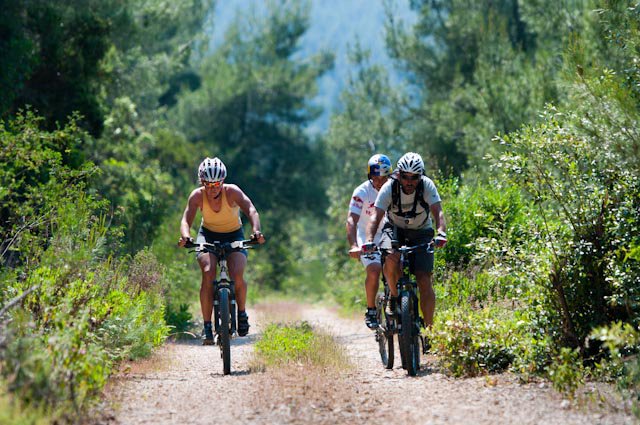
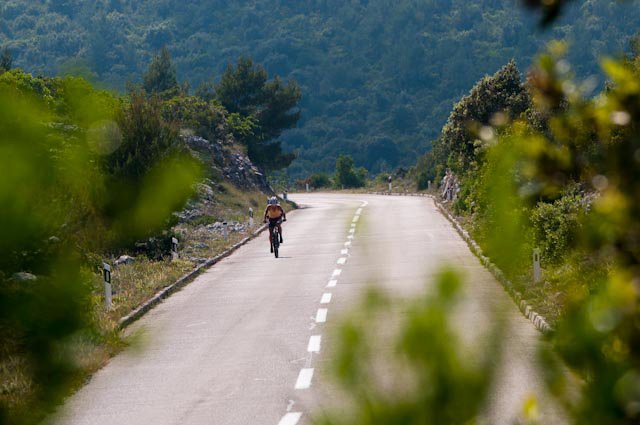
In Babina, the team switched from kayaks to bicycles and carried on pedaling down the main road.
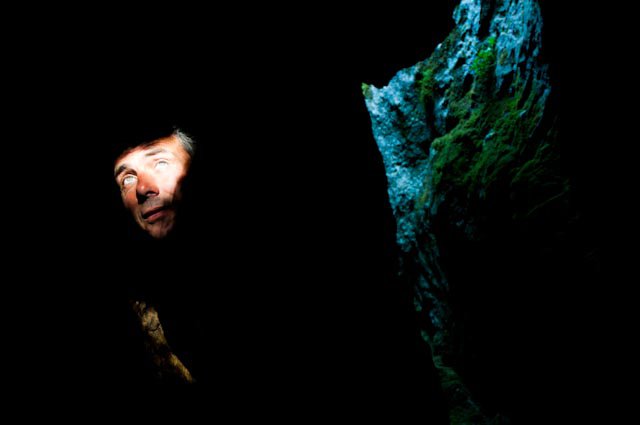
Cedo investigating narrow passages between cliffs.
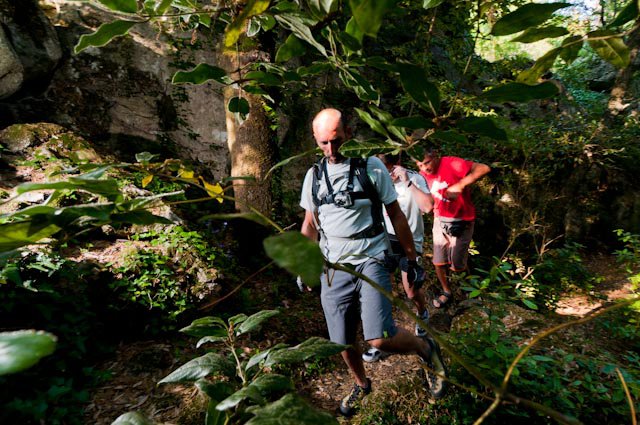
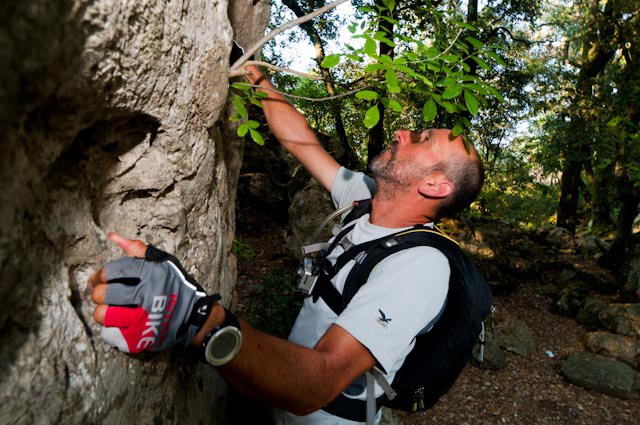
The team encountered Kocje, a beautiful and unusual protected park near Zrnovo. It is special for its labyrinth of cliffs and vegetation.
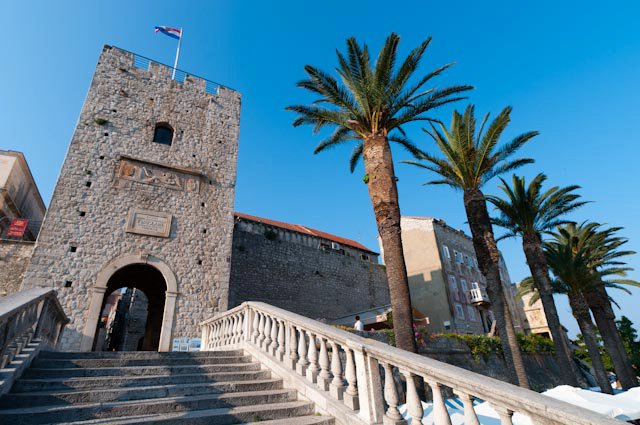
Korčula town.
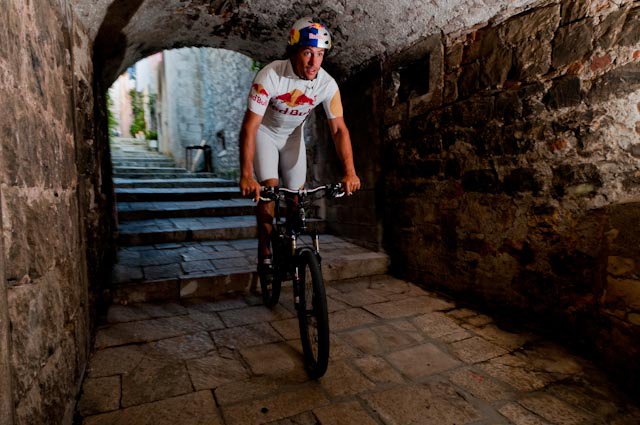
And Mislav riding through the streets of the town.
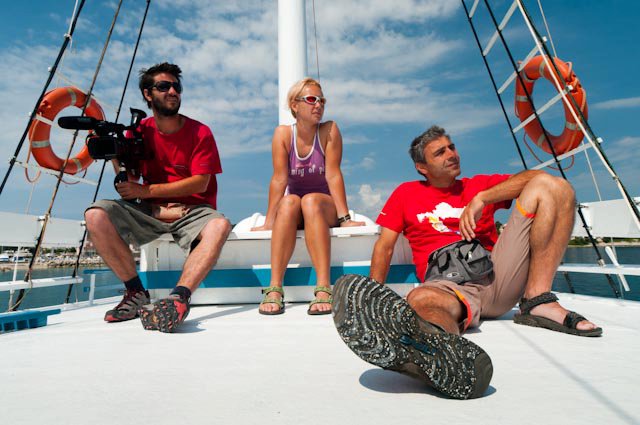
The team made it to Lumbarda.
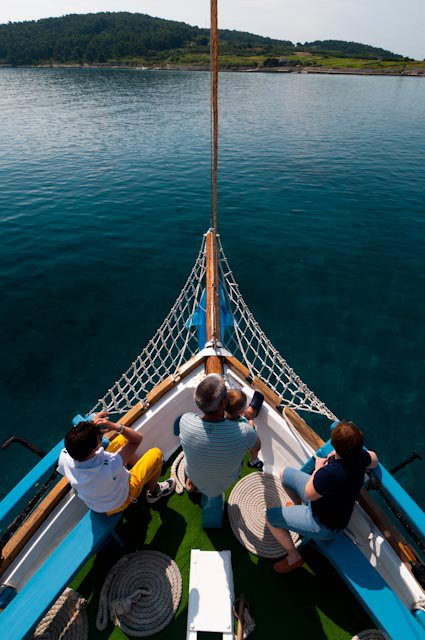
For a pleasant sail.
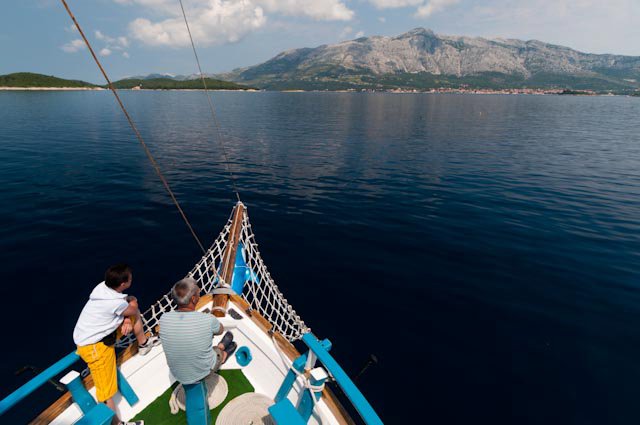
And a view of Pelješac.
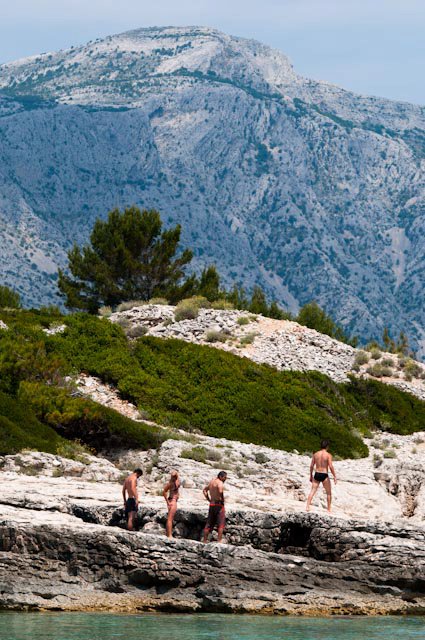
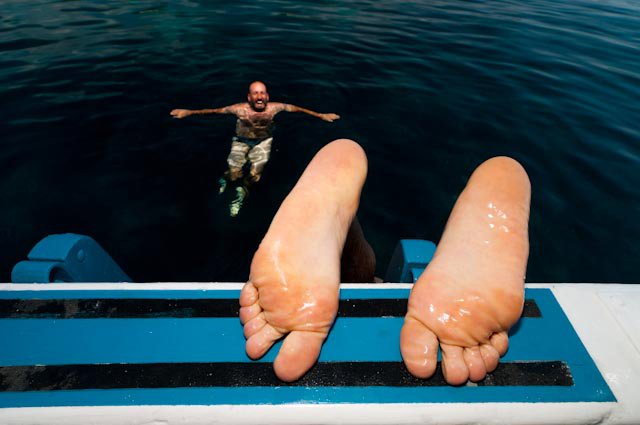
A Lumbarda swim on one of the islands, with St. Ilija, the highest peak of Pelješac, in the background.
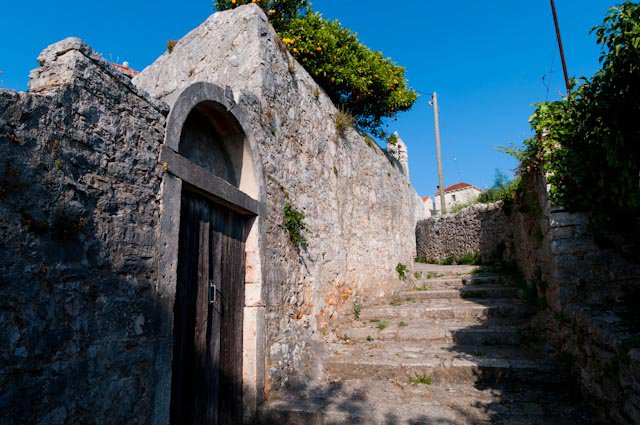
The team explored the Lumbarda streets.
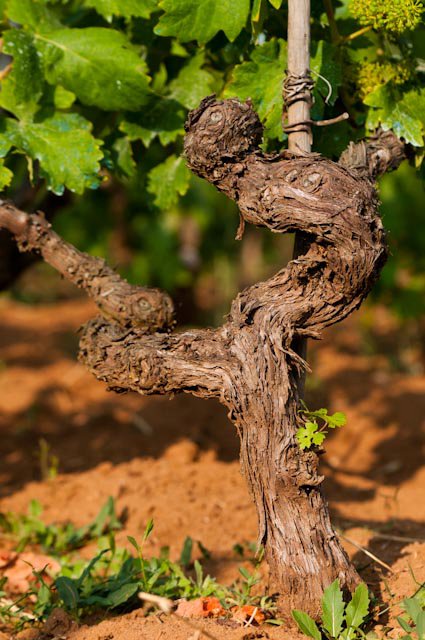
And Grk, the indigenous grape variety from the sandy plantations of Lumbarda.
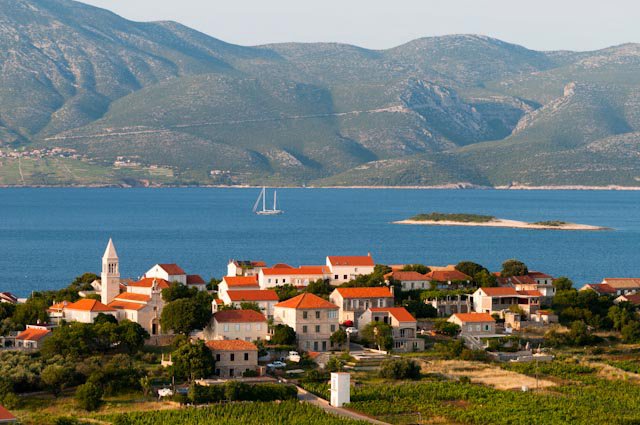
And the town in all of its glory.
A key part of the project was promoting tourism, and the official website has details of the key places visited during the day.
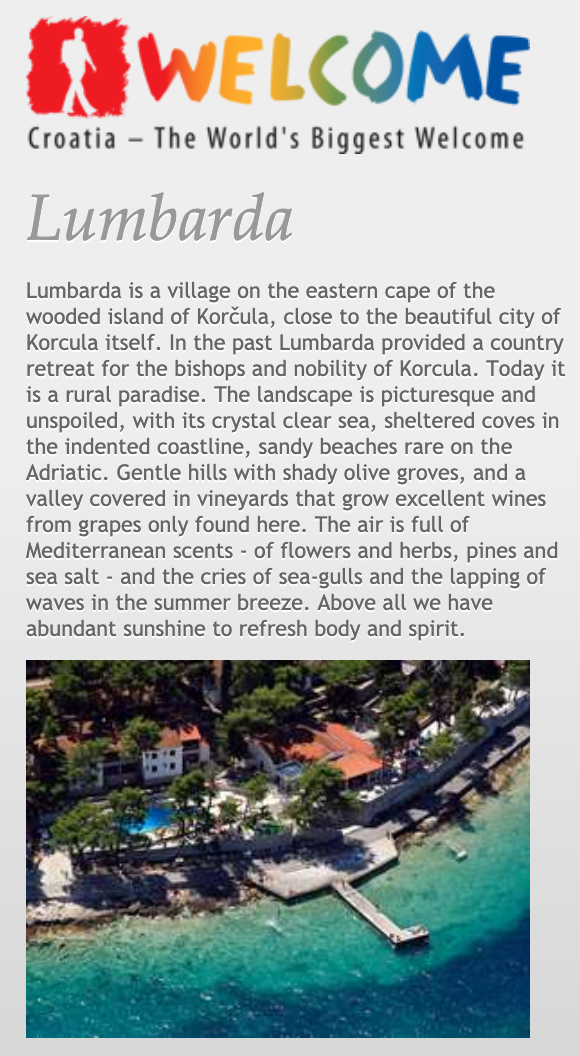
Lumbarda.
You can see the entire project on the Welcome website, as well as much more of Luka Tambaca's stunning photography on the Welcome Facebook page.
Tune in tomorrow for Day 48, as Lacko moves from Lumbarda to Ston.
To follow the whole project from the start, follow the dedicated TCN page.

